Birds are a diverse group of animals that make up the class Aves, with around 10,000 different species recognized worldwide. These feathered creatures are found everywhere from the icy tundras of the Arctic to the tropical rainforests of South America.
They vary greatly in shape, size, and color, with some species capable of flight while others are flightless. Birds exhibit unique adaptations and behaviors, such as migration over long distances, elaborate courtship displays, and complex vocal communication.
With their close association with the environment, birds are often a symbol of freedom and promote a sense of wonder in those who observe them. In this article, we explore the fascinating and diverse world of bird species.
1. Cranes
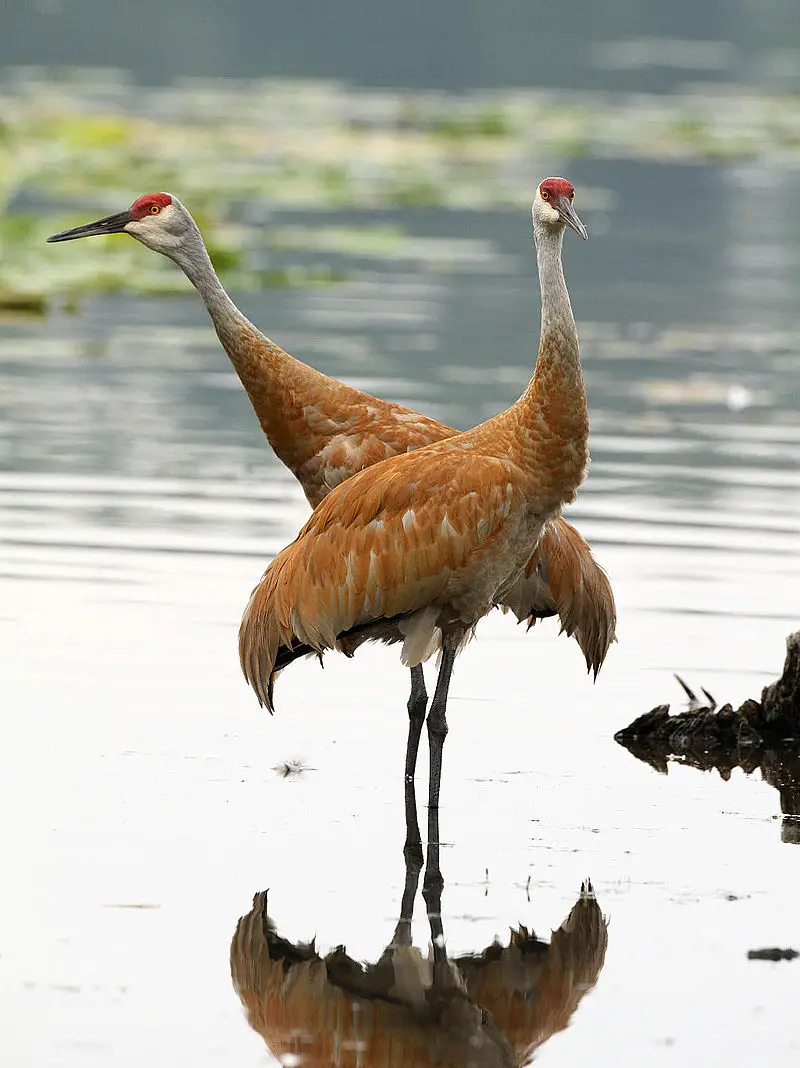
Cranes are elegant, long-legged birds belonging to the Gruidae family in the Gruiformes order. This family comprises 15 species distributed across four genera: Antigone, Balearica, Leucogeranus, and Grus.
Known for their distinctive long necks and graceful flight, cranes are often associated with wetlands and open habitats. They are renowned for their complex courtship dances and loud, trumpeting calls.
Cranes are a symbol of longevity and grace in many cultures and play a vital role in various ecosystems through their foraging and seed dispersal activities.
Scientific classification:
| Kingdom | Animalia |
| Phylum | Chordata |
| Class | Aves |
| Order | Gruiformes |
| Superfamily | Gruoidea |
| Family | GruidaeVigors, 1825 |
Also Featured In: Most Common Birds in China, Flocks Birds around Us
2. Gulls
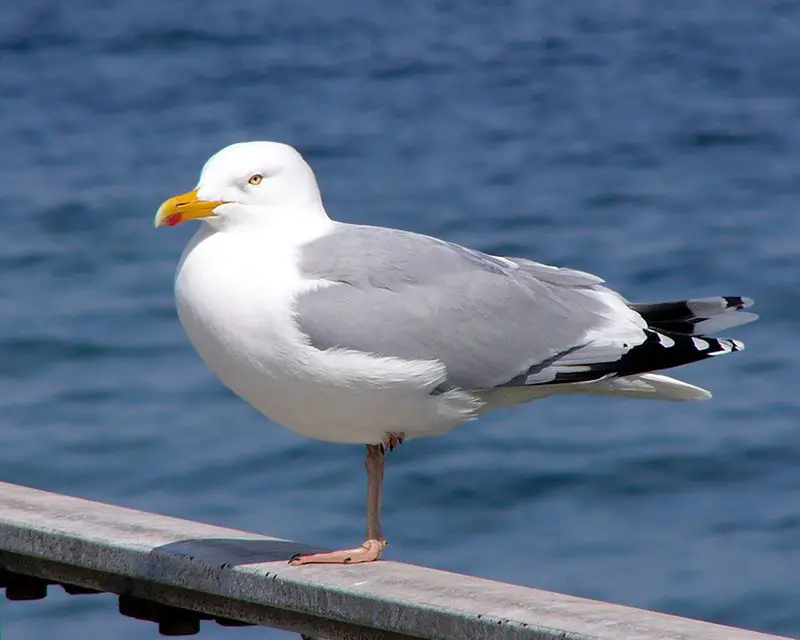
Gulls, commonly referred to as seagulls, are seabirds belonging to the family Laridae within the suborder Lari. While they share a closer evolutionary relationship with terns and skimmers, they are only distantly related to auks and waders.
Gulls are known for their adaptability and can be found in various coastal and inland environments worldwide. They are recognized by their distinctive plumage, webbed feet, and strong beaks, which aid in scavenging and opportunistic feeding habits.
Gulls are essential members of coastal ecosystems, helping to control scavenger populations and playing a role in nutrient cycling.
Scientific classification:
| Kingdom | Animalia |
| Phylum | Chordata |
| Class | Aves |
| Order | Charadriiformes |
| Suborder | Lari |
| Family | Laridae Rafinesque, 1815 |
Also Featured In: Ukrainian Birds You Should Know, Birds of Sweden
3. Gruiformes
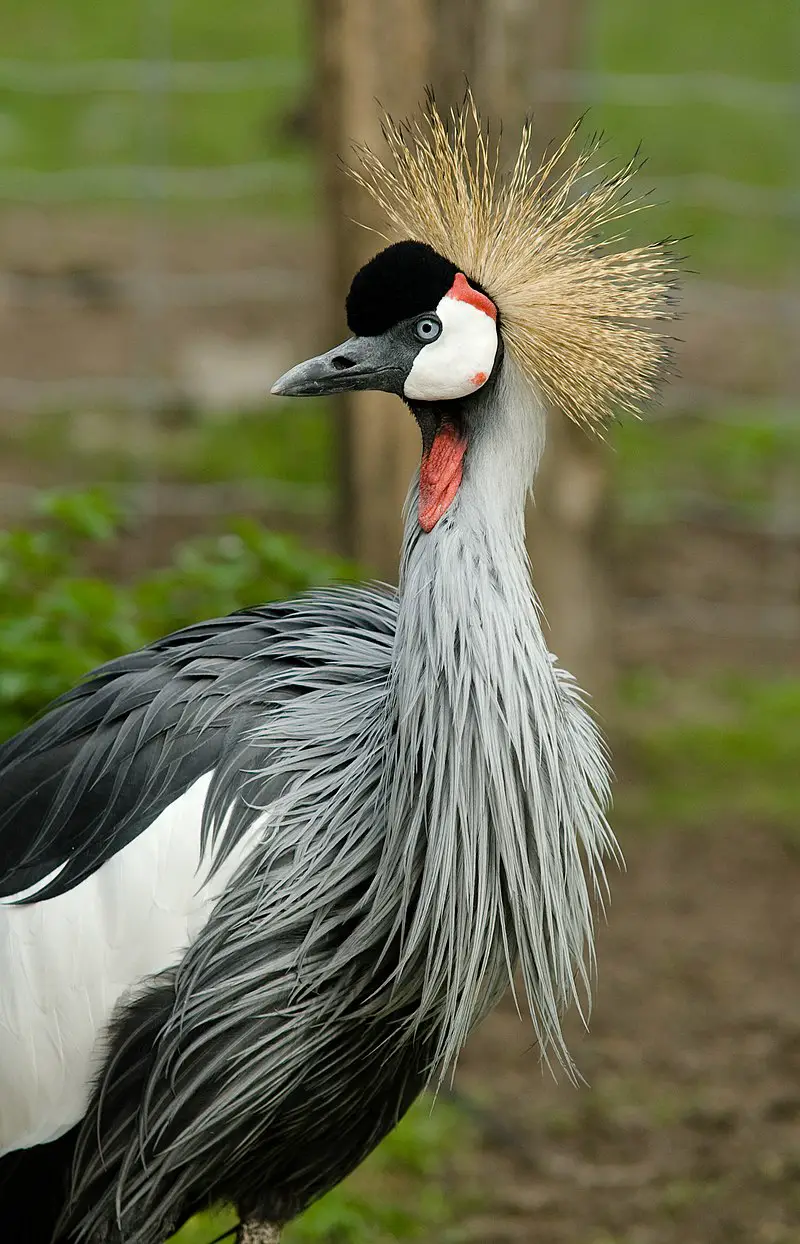
Gruiformes is an avian order encompassing a diverse group of birds known for their terrestrial habits. This order includes species such as cranes, rails, and coots.
Gruiformes are characterized by their strong, often elongated legs, adapted for walking and wading in marshy or aquatic environments.
Many members of this order are elusive and secretive, inhabiting dense reeds and wetlands. They exhibit a wide range of sizes, from the majestic and tall cranes to the smaller and more cryptic rails.
Gruiformes play vital roles in ecosystems, contributing to wetland health and serving as indicators of environmental quality due to their sensitivity to habitat changes.
Scientific classification:
| Kingdom | Animalia |
| Phylum | Chordata |
| Class | Aves |
| Clade | Gruimorphae |
| Order | Gruiformes Bonaparte, 1854 |
Also Featured In: Birds Found in Hungary, Bulgarian Birds
4. Golden Eagle

The golden eagle (Aquila chrysaetos) is a formidable bird of prey inhabiting the Northern Hemisphere and is renowned for its widespread distribution.
Belonging to the Accipitridae family, these majestic raptors are among the most well-known birds of prey in the Northern Hemisphere.
Characterized by their striking golden-brown plumage, powerful talons, and sharp beaks, golden eagles are apex predators, primarily feeding on mammals and birds.
They are renowned for their incredible hunting skills, soaring through the skies and diving at high speeds to capture prey. Revered in many cultures, golden eagles symbolize strength, freedom, and grace in the natural world.
Scientific classification:
| Kingdom | Animalia |
| Phylum | Chordata |
| Class | Aves |
| Order | Accipitriformes |
| Family | Accipitridae |
| Genus | Aquila |
| Species | A. chrysaetos |
Also Featured In: Native Birds of Kazakhstan, Birds that Live in the Deserts
5. Kingfisher
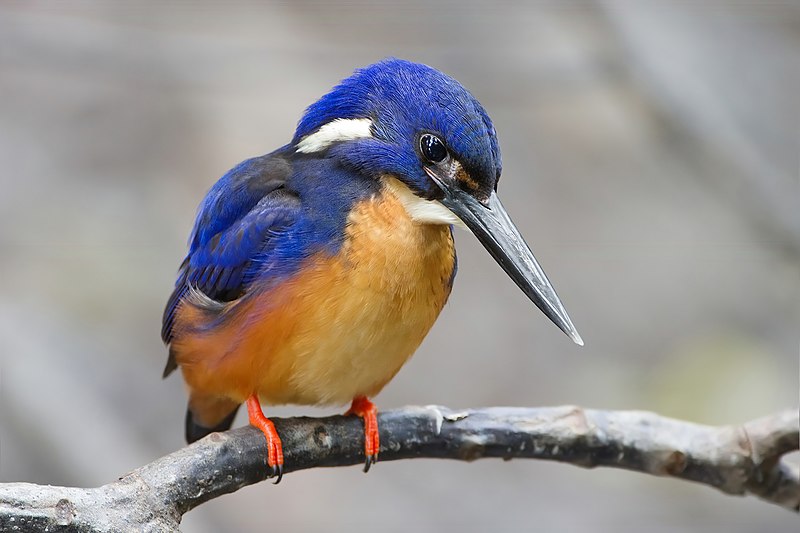
Kingfishers, members of the Alcedinidae family within the Coraciiformes order, are captivating, brightly colored birds widely admired for their striking appearance and remarkable fishing skills.
With a cosmopolitan distribution, these small to medium-sized birds are predominantly found in the tropical regions of Africa, Asia, and Oceania, but a few species also grace Europe with their presence.
Kingfishers are adept hunters, specializing in capturing fish and other aquatic prey by plunging headfirst into water bodies.
Their vibrant plumage, featuring shades of blue, green, and orange, adds a dash of color to their surroundings, making them a delight to observe in their natural habitats.
Scientific classification:
| Kingdom | Animalia |
| Phylum | Chordata |
| Class | Aves |
| Order | Coraciiformes |
| Suborder | Alcedines |
| Family | Alcedinidae Rafinesque, 1815 |
Also Featured In: Common Birds in India, Birds You’ll Find in Moldova
6. Thrush
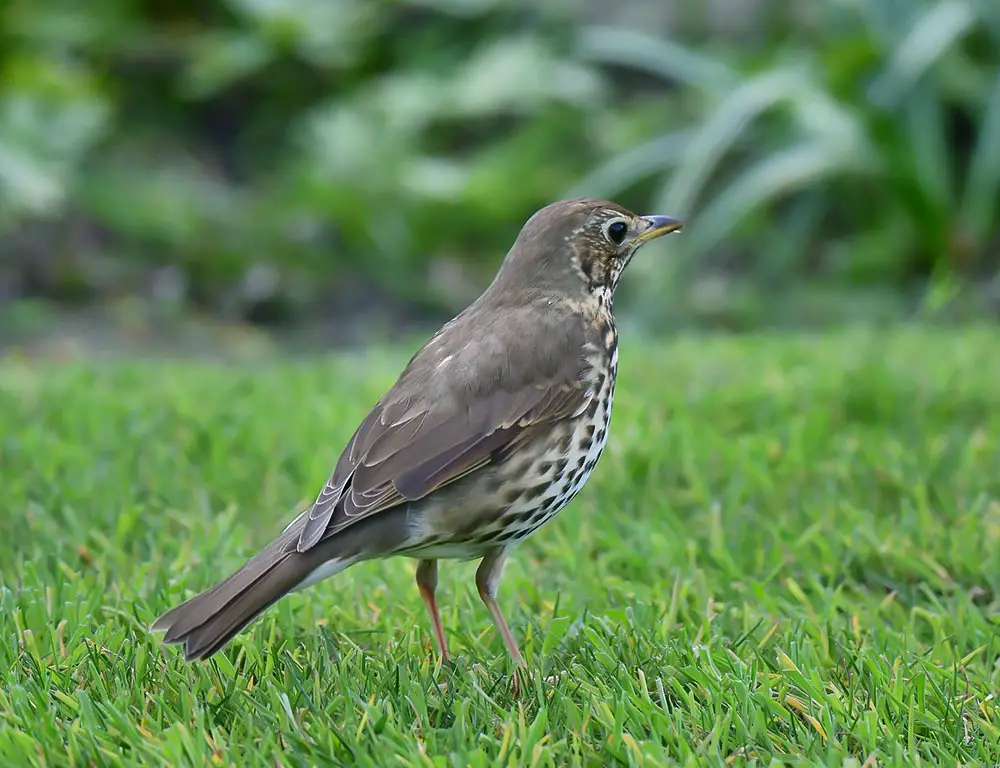
Thrushes, belonging to the Turdidae family of passerine birds, are renowned for their worldwide distribution and melodious songs.
While the family used to be more extensive, it underwent reclassification when the subfamily Saxicolinae, comprising chats and European robins, was redefined as Old World flycatchers.
Thrushes are known for their distinctively beautiful plumage, with species like the American Robin and European Blackbird standing out.
They are skilled foragers, primarily feeding on insects, earthworms, and fruits. Thrushes play crucial roles in ecosystems as seed dispersers.
Their enchanting songs are a familiar sound in many regions, adding to their charm in the avian world.
Scientific classification:
| Kingdom | Animalia |
| Phylum | Chordata |
| Class | Aves |
| Order | Passeriformes |
| Suborder | Passeri |
| Family | Turdidae Rafinesque, 1815 |
Also Featured In: Most Common Songs Birds that Live around You, Most Common Romanian Birds
7. Northern Cardinal

The Northern Cardinal, colloquially referred to as the redbird, common cardinal, or just cardinal, is a striking bird within the Cardinalis genus.
Native to North America, it is known for its vibrant plumage, with the male sporting brilliant red feathers and a distinctive crest on its head.
The female, though less flashy, displays a lovely combination of reddish hues. Northern Cardinals are year-round residents in their habitats and are often spotted in woodlands, gardens, and urban areas.
Their melodious and cheerful songs add a delightful charm to the surroundings, making them a beloved and iconic species in the avian world.
Scientific classification:
| Kingdom | Animalia |
| Phylum | Chordata |
| Class | Aves |
| Order | Passeriformes |
| Family | Cardinalidae |
| Genus | Cardinalis |
| Species | C. cardinalis |
Also Featured In: Most Common United States Birds, Birds Commonly Found in New York
8. American Robin

The American Robin, scientifically known as Turdus migratorius, is a migratory songbird belonging to the true thrush genus Turdus and the Turdidae family.
Despite its name, it shares its moniker with the European robin due to its reddish-orange breast, even though these two species are not closely related.
The European robin belongs to the Old World flycatcher family, making the American Robin a distinctly different avian species. American Robins are widely recognized for their cheerful presence and are one of the most well-known and beloved birds in North America.
They are often associated with the arrival of spring and are known for their melodic and tuneful songs, which fill the air as they forage for insects and fruits in a variety of habitats, including gardens, woodlands, and urban areas.
These adaptable birds play a significant ecological role as seed dispersers, helping to maintain the health of the ecosystems they inhabit.
Scientific classification:
| Kingdom | Animalia |
| Phylum | Chordata |
| Class | Aves |
| Order | Passeriformes |
| Family | Turdidae |
| Genus | Turdus |
| Species | T. migratorius |
Also Featured In: Blue Birds You’ll Found around Us, Birds Live in Arkansas
9. American Goldfinch
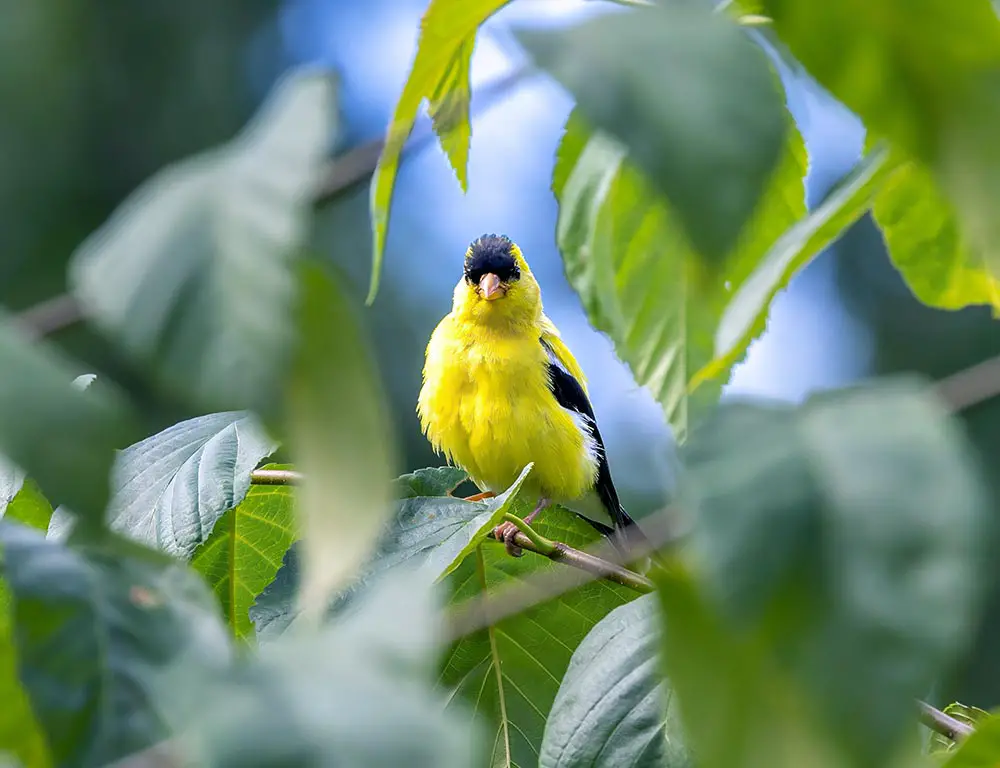
The American Goldfinch, a diminutive bird in the finch family, is a delightful and colorful resident of North America. This migratory species is known for its vibrant plumage, with bright yellow feathers during the breeding season and a more subdued olive-brown hue in winter.
Their range extends from mid-Alberta to North Carolina during breeding, and from the southern Canada-U.S. border to Mexico in winter. American Goldfinches are seed-eating specialists, favoring thistles and sunflowers.
Their cheerful, undulating flight and sweet, warbling songs make them a cherished sight and sound in gardens and open habitats throughout their range, often earning them the endearing nickname “wild canaries.”
Scientific classification:
| Kingdom | Animalia |
| Phylum | Chordata |
| Class | Aves |
| Order | Passeriformes |
| Family | Fringillidae |
| Subfamily | Carduelinae |
| Genus | Spinus |
| Species | S. tristis |
Also Featured In: New Hampshire Birds You Should Know, Common Southern Californian Birds
10. Songbirds
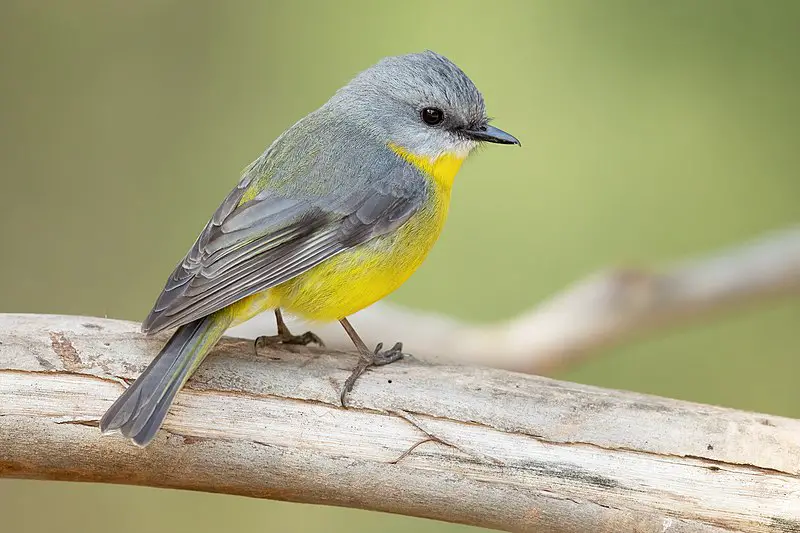
Songbirds are a special suborder of perching birds found all over the world. These beautiful creatures have intricate vocal organs that allow them to produce elaborate bird songs, making them stand out from other species.
With around 5,000 different types of songbirds in existence, they come in various sizes and colors with complex feathers adding to their beauty.
Songbirds play an important role in ecosystems as they help disperse seeds by eating fruit and insects which act as agents for pollination.
Their presence also serves to attract more biodiversity into areas where these delicate animals live, creating vibrant habitats full of life.
Scientific classification:
| Kingdom | Animalia |
| Phylum | Chordata |
| Class | Aves |
| Order | Passeriformes |
| Clade | Eupasseres |
| Suborder | Passeri Linnaeus, 1758 |
Also Featured In: Common Birds in the Cities, Summer Birds that Live around Us
11. Black-Capped Chickadee

The black-capped chickadee is a small and cheerful songbird found in deciduous and mixed forests across North America. It has an iconic black cap, white cheeks, gray back, and wings with whitish bars on them.
The underparts are usually light-colored or greyish-brown. This species is well adapted to cold winters as it can reduce its body temperature by up to 8°C while roosting at night; this helps save energy during the colder months of the year.
It feeds mainly on insects but also eats seeds, fruits, and suet from bird feeders when available.
Black-capped chickadees are popular birds among backyard visitors due to their sociable nature – they often establish lifelong partnerships with one another for breeding purposes.
Furthermore, they have been designated as state birds of Massachusetts and Maine in the USA plus New Brunswick in Canada – a testament to how beloved these little avian friends truly are.
Scientific classification:
| Kingdom | Animalia |
| Phylum | Chordata |
| Class | Aves |
| Order | Passeriformes |
| Family | Paridae |
| Genus | Poecile |
| Species | P. atricapillus |
Also Featured In: Autumn Birds You Should Know, British Columbian Birds
12. Wrens
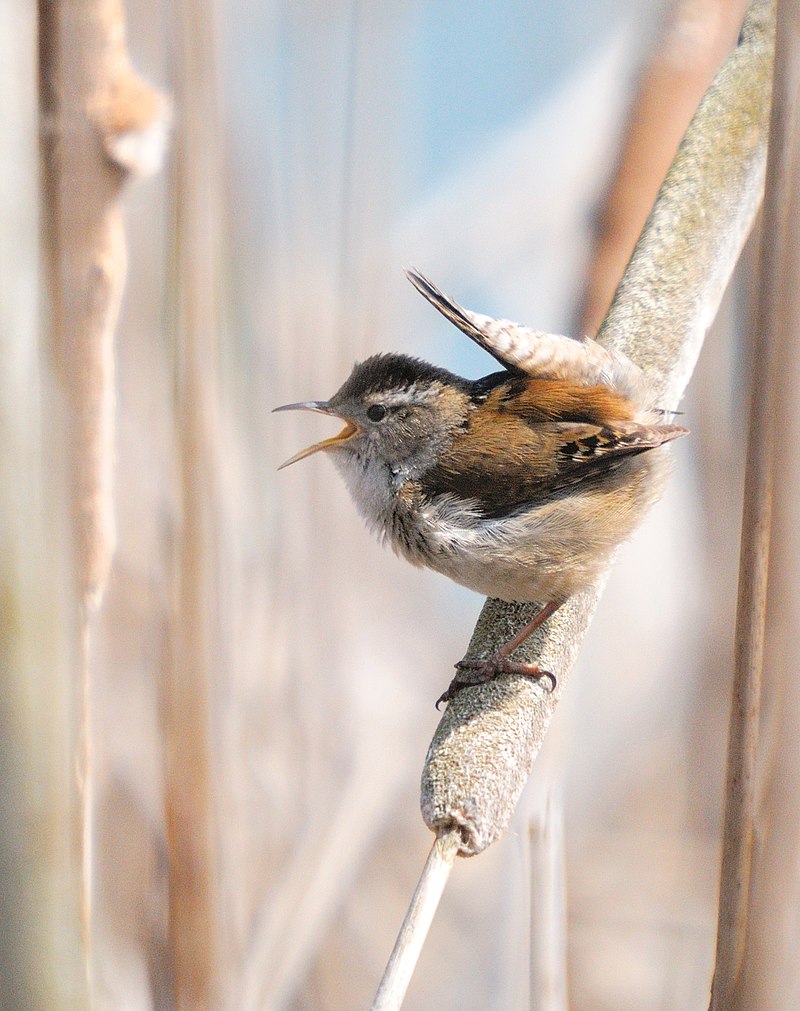
Wrens are a family of small brown passerine birds found mainly in the Americas. They are considered one of the most abundant bird species, with 88 known varieties divided into 19 genera.
The Eurasian wren is the only type that inhabits Europe and other parts of the Old World, where it’s commonly referred to simply as “wren.”
This species has been given its name due to similar-looking unrelated birds living elsewhere such as New Zealand wrasses.
Wrens have tiny bodies with thin bills and long tails which they often hold upright for hours at a time while singing their loud cheery songs from treetops or low shrubs.
Their diet consists mostly of insects but can also include fruits and seeds depending on availability in their habitat range.
Scientific classification:
| Kingdom | Animalia |
| Phylum | Chordata |
| Class | Aves |
| Order | Passeriformes |
| Superfamily | Certhioidea |
| Family | Troglodytidae Swainson, 1832 |
Also Featured In: Common Denmark Birds, Most Common Scotland Birds
13. Blue Jay

The Blue Jay is a beautiful bird that resides in the eastern and central United States, as well as Newfoundland Canada.
They have an unmistakable blue colored plumage with white markings on their heads and wings.
These birds are highly adaptable to different habitats ranging from deciduous forests to urban areas.
As part of the Corvidae family, they are known for being intelligent problem solvers who will often use tools or mimic vocalizations of other species like hawks when defending their territories.
Their diet consists mostly of insects, seeds, and nuts but can also include small vertebrates such as frogs or lizards if food resources become scarce.
Overall these birds provide much-needed color to our environment while playing important roles in maintaining healthy ecosystems through pollination services and seed dispersal activities.
Scientific classification:
| Kingdom | Animalia |
| Phylum | Chordata |
| Class | Aves |
| Order | Passeriformes |
| Family | Corvidae |
| Genus | Cyanocitta |
| Species | C. cristata |
Also Featured In: Most Common Nature Birds, Birds that Migrate through Illinois in the Spring
14. Wild Turkey
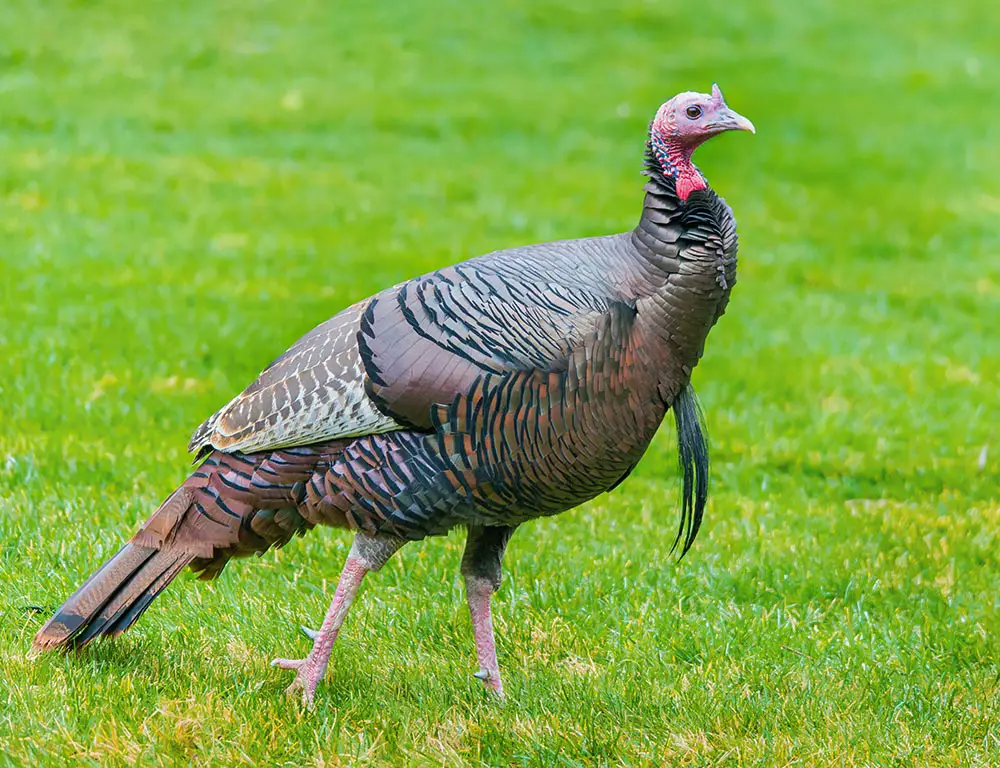
Wild turkeys are large birds native to North America, and the heaviest members of the Galliformes order.
They have long reddish-yellow legs with grayish-green feathers which distinguish them from their domesticated cousin.
Their population has been steadily increasing due to conservation efforts since being declared endangered in 1975.
Wild turkeys can be found across forests, meadows, and open woodlands where they feed on insects, plant materials, and small animals such as lizards or frogs.
As opportunistic omnivores, they also take advantage of human food sources when available making them a familiar sight around campgrounds and picnic areas during summer months.
These majestic creatures often roost in trees at night for protection against predators but will fly off into flocks if disturbed by humans or other nearby threats.
Scientific classification:
| Kingdom | Animalia |
| Phylum | Chordata |
| Class | Aves |
| Order | Galliformes |
| Family | Phasianidae |
| Genus | Meleagris |
| Species | M. gallopavo |
Also Featured In: Birds of Symbolism, Small Birds that Commonly Found in Ohio
15. Bald Eagle
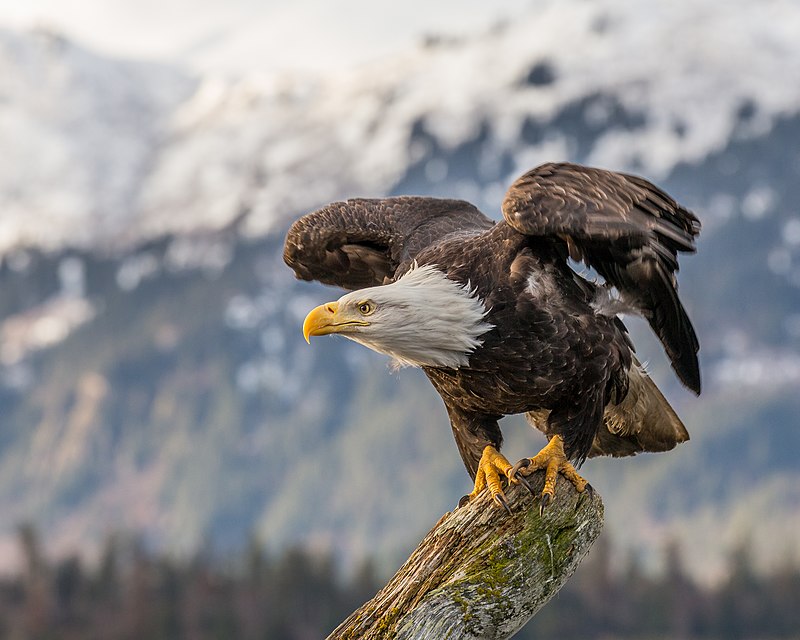
The majestic Bald Eagle is a bird of prey found in North America and recognized as the national symbol of the United States.
With its distinctive white head, brown body, and striking yellow beak, this sea eagle has two known subspecies that form a species pair with the White-tailed Eagle.
It inhabits much of Canada, Alaska all states in the US contiguous area, and Northern Mexico near large bodies of water where they feed mainly on fish.
These birds have an impressive wingspan ranging from 1.8 to 2 meters depending on their size making them one of nature’s most magnificent creatures.
Scientific classification:
| Kingdom | Animalia |
| Phylum | Chordata |
| Class | Aves |
| Order | Accipitriformes |
| Family | Accipitridae |
| Genus | Haliaeetus |
| Species | H. leucocephalus |
Also Featured In: Birds You’ll Find in Zoo, Everglades Birds
16. Peregrine Falcon
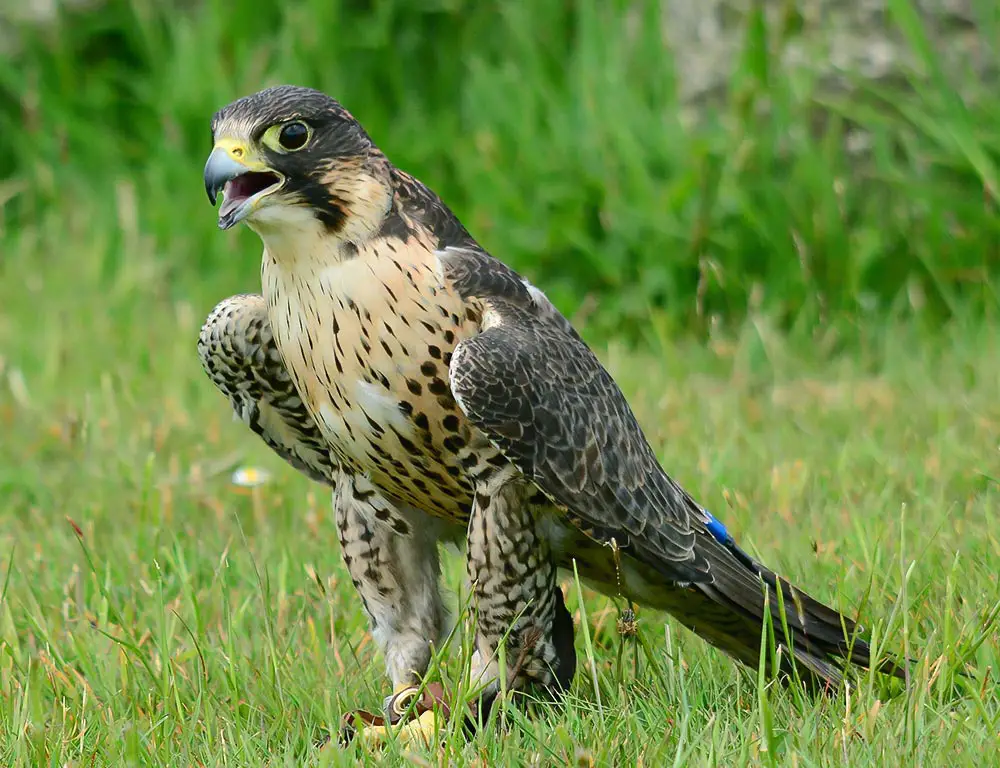
The Peregrine Falcon is a majestic bird of prey belonging to the family Falconidae. It has a blue-grey back, barred white underparts, and a black head making it easily recognizable.
This intelligent raptor is known for its incredible speed reaching over 320 km/h (200 mph) during hunting dives – one of the fastest animals in existence.
The peregrine falcon can be found around the world from Arctic tundra to tropical rainforests thriving with humans or in high alpine mountains far away from civilization.
With their beauty, power, and adaptability they are an impressive species that have earned respect among many cultures throughout history as symbols of strength and endurance.
Scientific classification:
| Kingdom | Animalia |
| Phylum | Chordata |
| Class | Aves |
| Order | Falconiformes |
| Family | Falconidae |
| Genus | Falco |
| Species | F. peregrinus |
Also Featured In: Asian Birds, European Birds
17. New World Warblers

New World warblers are an incredibly diverse family of small birds found only in the Americas. They range in size from tiny hummingbirds to large thrushes and come in a variety of vibrant colors.
All have thin bills made for eating insects which form their main diet. Most species live predominantly arboreal lives, meaning they spend most of their time among trees or bushes searching for food.
However, some members such as ovenbirds and waterthrushes prefer more terrestrial habitats like forest floors where they can scavenge for bugs on the ground instead.
Warblers provide a great source of entertainment with their beautiful songs often filling up woodlands during mornings and evenings throughout springtime.
Scientific classification:
| Kingdom | Animalia |
| Phylum | Chordata |
| Class | Aves |
| Order | Passeriformes |
| Superfamily | Emberizoidea |
| Family | Parulidae Wetmore et al., 1947 |
Also Featured In: Common Birds in Saskatchewan, Common Birds in Alberta
18. Downy Woodpecker
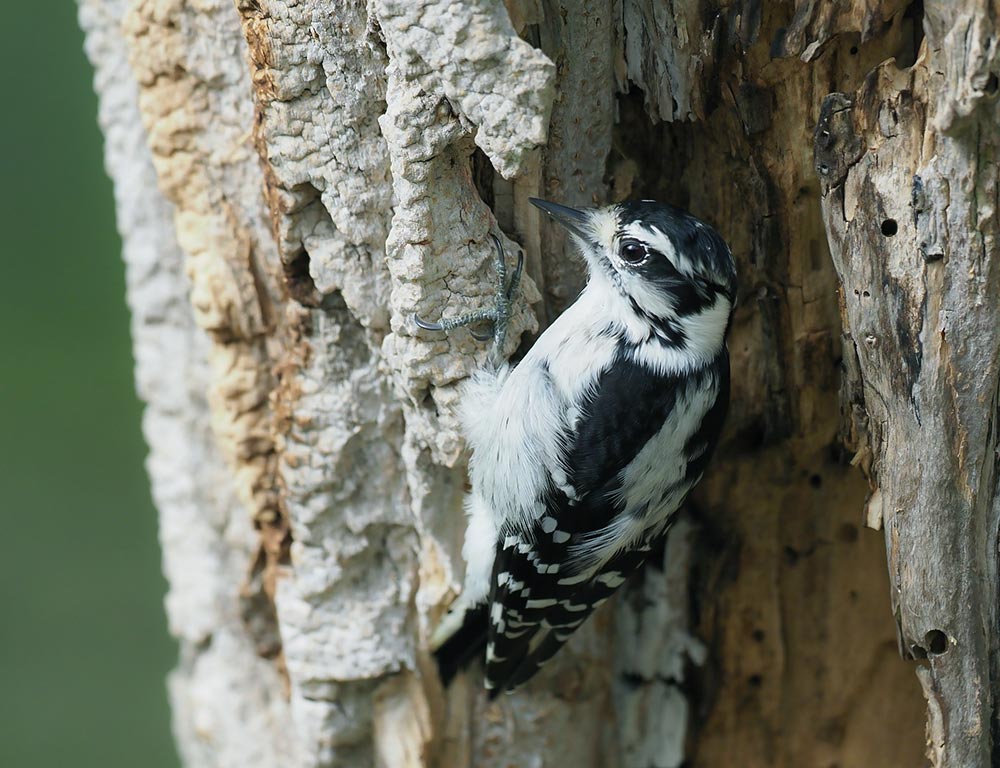
The downy woodpecker is a small species of woodpecker found in North America. Growing up to 7 inches long, it can be identified by its white belly and spotted wings.
It inhabits forests throughout the United States and Canada, except deserts in the southwest and northern tundra.
This bird nests in tree cavities and feeds mostly on insects but will supplement its diet with fruit or nuts when available.
The Downy Woodpecker has an unmistakable call that sounds like a loud ‘piker’, similar to other members of its family such as the Hairy Woodpecker.
Scientific classification:
| Kingdom | Animalia |
| Phylum | Chordata |
| Class | Aves |
| Order | Piciformes |
| Family | Picidae |
| Genus | Dryobates |
| Species | D. pubescens |
Also Featured In: Long Island Birds You Should Know, Birds in Calgary You’ll Love to See
19. House Sparrow

The house sparrow is a small bird of the Passeridae family. It has an average length of 16 cm and weighs 24-39.5 gm.
Females have dull brown and grey plumage, whereas males are brighter, with black, white, and brown markings on their wings and back feathers.
This species is one among 25 different kinds in its genus Passer. These birds are found all around the world mainly near human dwellings where they feed off food scraps from garbage bins or gardens etc..
They also make nests close to houses which makes them even more visible to people living nearby.
House sparrows can be seen hopping around yards looking for food during daytime hours but usually hide in colonies at night time.
Scientific classification:
| Kingdom | Animalia |
| Phylum | Chordata |
| Class | Aves |
| Order | Passeriformes |
| Family | Passeridae |
| Genus | Passer |
| Species | P. domesticus |
Also Featured In: House Birds You’ll Love to Pet, Birds in Iowa Spring
20. House Finch

The House Finch is a species of finch native to western North America and has been introduced in the eastern half of the continent as well as Hawaii.
It’s an average-sized finch with adults measuring 12.5 – 15 cm (5 – 6 inches) long and having wingspans between 20 – 25 cm (8 – 10 inches).
The upperparts are brown, while its underparts range from pale grayish white to yellow depending on subspecies.
Its face is streaked or spotted with reddish coloration; males typically have brighter plumage than females due to sexual dimorphism.
They’re mostly found near human habitations such as farms and gardens where they feed on grains, fruits, insects, etc., making them very popular among birders who want something colorful for their backyard.
Scientific classification:
| Kingdom | Animalia |
| Phylum | Chordata |
| Class | Aves |
| Order | Passeriformes |
| Family | Fringillidae |
| Subfamily | Carduelinae |
| Genus | Haemorhous |
| Species | H. mexicanus |
Also Featured In: Birds Live Near San Diego, Common Birds That Live in Las Vegas
21. Common Starling

The Common Starling is a medium-sized passerine bird that belongs to the Starling family. It has glossy black plumage with a metallic sheen, and at certain times of the year, it can be speckled with white.
The bill and legs are typically pink or black depending on the season, while its length measures about 8 inches long.
Its diet consists mainly of insects but also includes small fruits and seeds as well as some human food waste.
They live in large flocks that protect predators, although they can become quite aggressive when defending their nesting sites during breeding seasons.
Overall, this species is highly adaptable and widely distributed across many parts of Europe making them one of the most successful birds in the region today.
Scientific classification:
| Kingdom | Animalia |
| Phylum | Chordata |
| Class | Aves |
| Order | Passeriformes |
| Family | Sturnidae |
| Genus | Sturnus |
| Species | S. vulgaris |
Also Featured In: Birds of Nova Scotia, Yellow Connecticut Birds
22. Mourning Dove
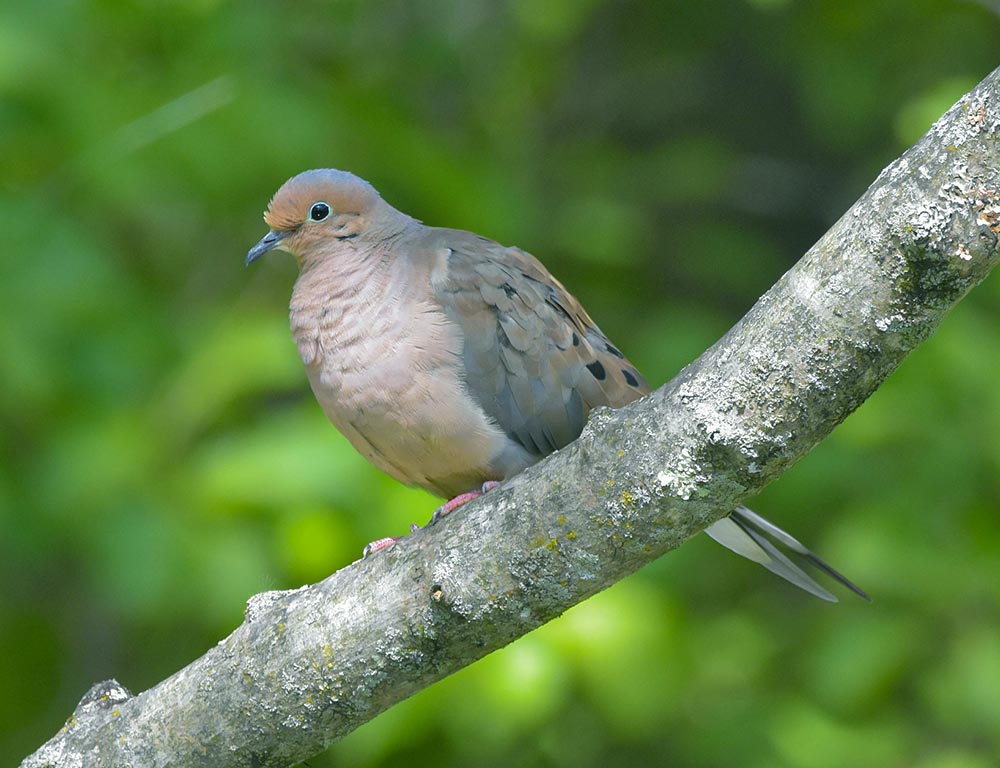
The Mourning Dove is a breathtakingly beautiful bird. It has stunning gray and brown feathers with white-tipped wings, giving it an elegant appearance. Its long tail also adds to its graceful look in flight.
A symbol of peace and serenity, they are abundant across North America and can be found in gardens or open fields throughout the year.
As well as being popular game birds for hunters, they feed on grains such as wheat and millet providing important food sources for wildlife species including foxes, coyotes, skunks, and raccoons.
These doves have a distinctive cooing sound that can often be heard echoing through woodlands during summer evenings making them one of nature’s greatest treasures.
Scientific classification:
| Kingdom | Animalia |
| Phylum | Chordata |
| Class | Aves |
| Order | Columbiformes |
| Family | Columbidae |
| Genus | Zenaida |
| Species | Z. macroura |
Also Featured In: Birds that Live in San Francisco Bay Area, Birds that Live in Mississippi
23. Hummingbirds
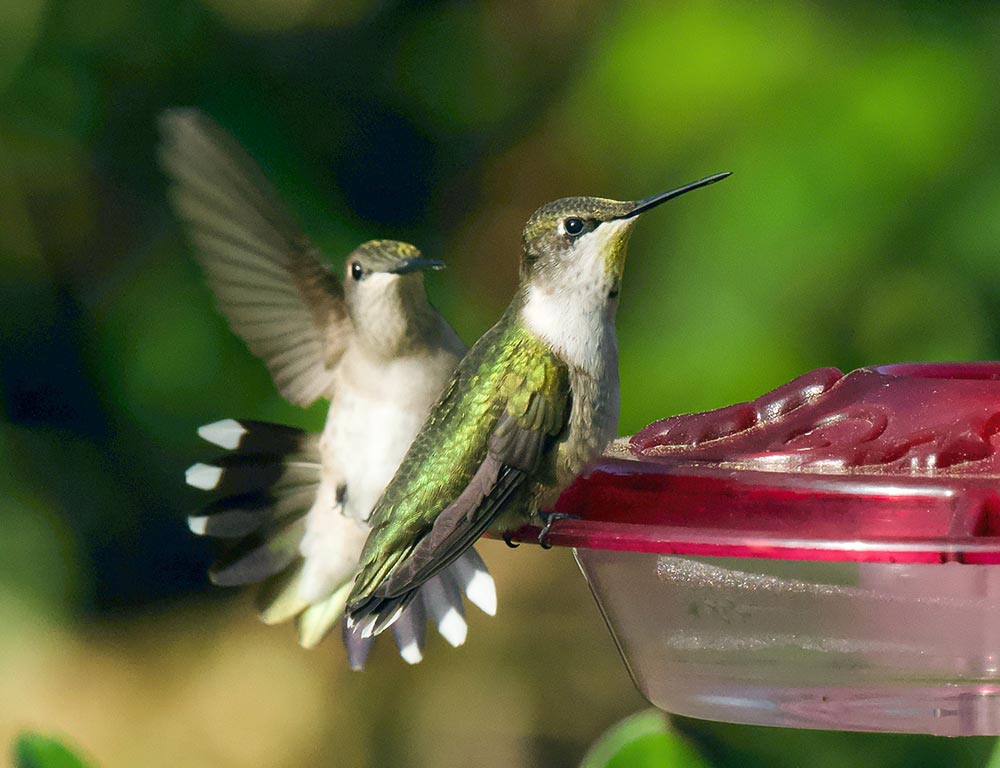
Hummingbirds are tiny birds found throughout the Americas, from Alaska to Tierra del Fuego. Most species measure between 3-5 inches in length and weigh less than an ounce.
The smallest hummingbird is only 2 inches long. Hummingbirds have a unique ability to hover by rapidly flapping their wings up to 80 times per second.
They feed on nectar and insects, with some species even able to drink sap or eat pollen directly off flowers.
Their vibrant colors make them instantly recognizable as they dart through gardens in search of food and mates.
Hummingbirds truly bring joy into our lives as they remind us that nature’s beauty can be seen around every corner if we take the time to look for it.
Scientific classification:
| Kingdom | Animalia |
| Phylum | Chordata |
| Class | Aves |
| Order | Apodiformes |
| Family | Trochilidae Vigors, 1825 |
Also Featured In: Rainforest Birds You Should Know, Spiritual Birds
24. Mallard
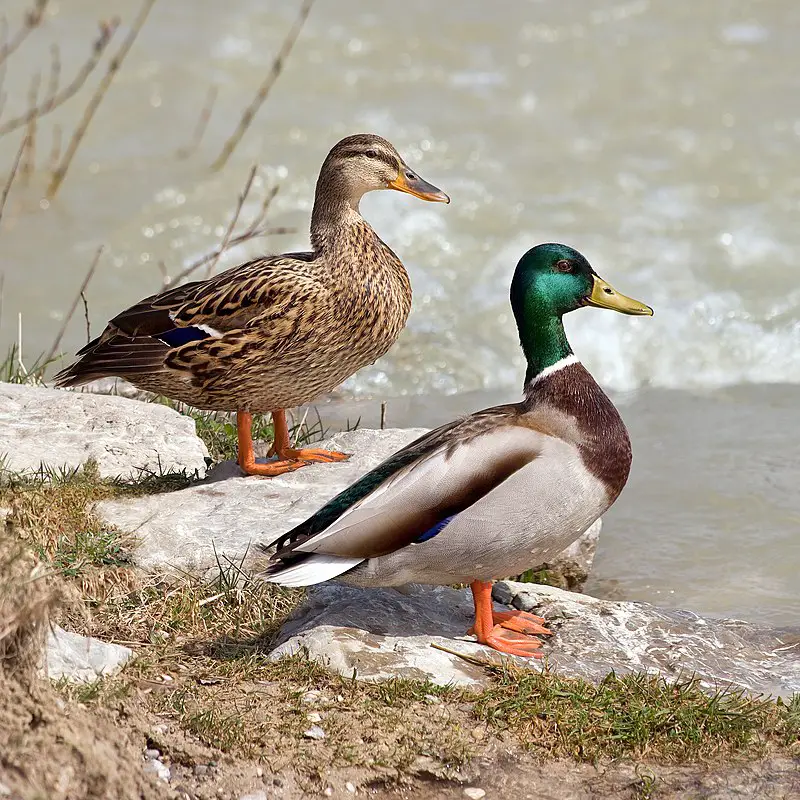
The Mallard is a species of dabbling duck that can be found living in temperate and subtropical regions across the Americas, Eurasia, and North Africa.
It has been introduced to other areas such as New Zealand, Australia, Peru, Brazil, and South Africa by humans.
This beautiful bird belongs to the Anatinae subfamily of waterfowl family Anatidae. The adult mallards have glossy green heads with white neck rings surrounding them.
It along with brownish-grey body feathers makes them look stunning when they fly away or just sit in their natural habitat around lakes or ponds.
They are excellent swimmers too due to webbed feet which help them swim fast underwater while looking for food like aquatic insects etc.
Their loud quacking sound makes them quite popular among nature lovers.
Scientific classification:
| Kingdom | Animalia |
| Phylum | Chordata |
| Class | Aves |
| Order | Anseriformes |
| Family | Anatidae |
| Genus | Anas |
| Species | A. platyrhynchos |
Also Featured In: Most Popular Bird Species in North America, Water Birds Live around Us
25. Barn Swallow
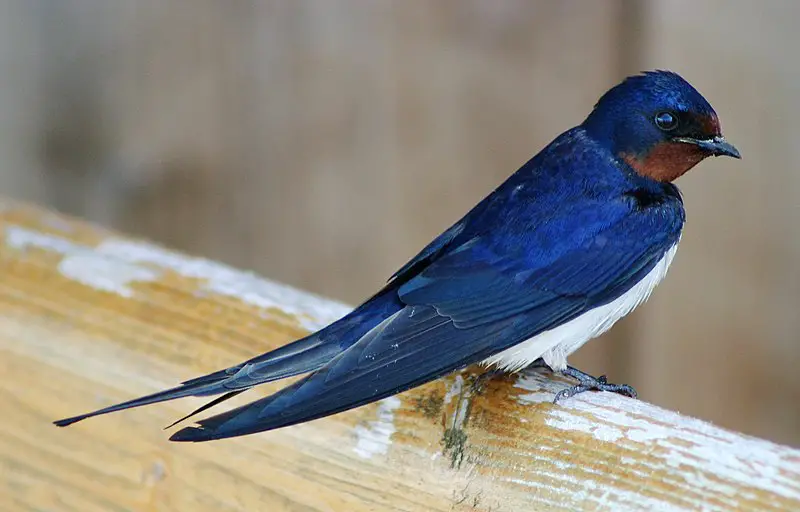
The Barn Swallow is a beautiful passerine bird with blue upperparts and a long, deeply forked tail. Found in Europe, Asia, Africa and the Americas.
It has an astonishingly large natural distribution spanning 251 million square kilometers globally; likely making it one of the world’s most widespread species.
This swallow typically nests near human habitation as well as other open areas such as fields or grasslands which provide them with suitable invertebrate prey to feed on.
They are insectivorous birds that often fly together in flocks looking for food over rivers or marshes usually just above tree-top level.
The barn swallow can also be identified by its strong flight consisting of swift continuous wing beats interspersed with glides during which they hold their wings slightly raised at the shoulders giving them distinct V-shaped silhouettes in the sky.
Scientific classification:
| Kingdom | Animalia |
| Phylum | Chordata |
| Class | Aves |
| Order | Passeriformes |
| Family | Hirundinidae |
| Genus | Hirundo |
| Species | H. rustica |
Also Featured In: Birds that Live in Croatia, Common Estonian Birds
26. Osprey
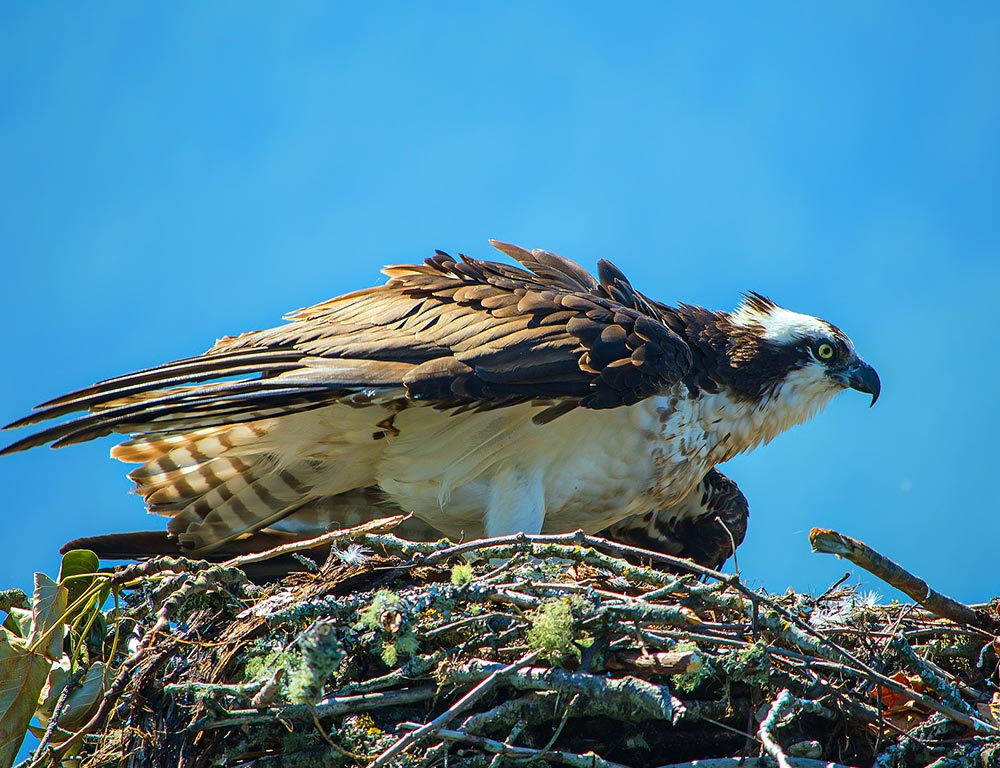
The Osprey is a majestic bird of prey with an incredibly wide habitat range. It has distinctive brown upperparts and greyish head and underparts, making it easily identifiable in the skies above many regions across the world.
With a wingspan of up to 180cm (71in) and body length reaching 60cm (24in), this large raptor specializes in hunting for fish, soaring high over rivers as well as coasts searching for its next meal.
Despite living near water sources, they can also be found inhabiting mountainsides or even woodlands, proving their incredible adaptability. An impressive species that truly deserves admiration.
Scientific classification:
| Kingdom | Animalia |
| Phylum | Chordata |
| Class | Aves |
| Order | Accipitriformes |
| Family | Pandionidae |
| Genus | Pandion |
| Species | P. haliaetus |
Also Featured In: Birds of Latvia, Most Common Lake Birds
27. Finches
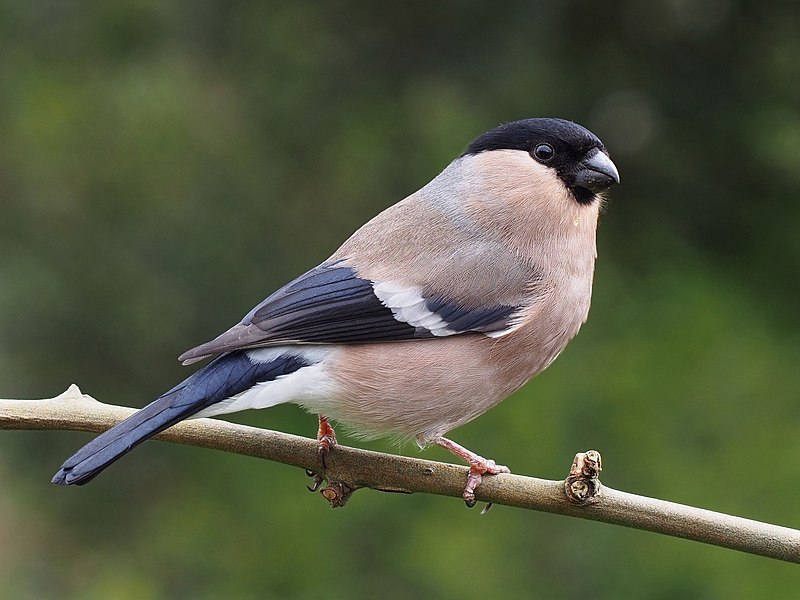
Finches are a diverse group of passerine birds found around the world, excluding Australia and polar regions. They vary in size from small to medium-sized, with stout conical bills adapted for eating seeds and nuts.
Many species have brightly coloured plumage; this helps them stand out against their natural habitats which can range from deserts to forests.
Finches occupy these areas all year round without migrating elsewhere – making them particularly well suited for local environments.
As part of the Fringillidae family, they possess unique characteristics that make them popular amongst birdwatchers everywhere.
Scientific classification:
| Kingdom | Animalia |
| Phylum | Chordata |
| Class | Aves |
| Order | Passeriformes |
| Superfamily | Passeroidea |
| Family | Fringillidae Leach, 1820 |
Also Featured In: Native Pakistani Birds, Aviary Birds You Should Know
28. Shorebirds
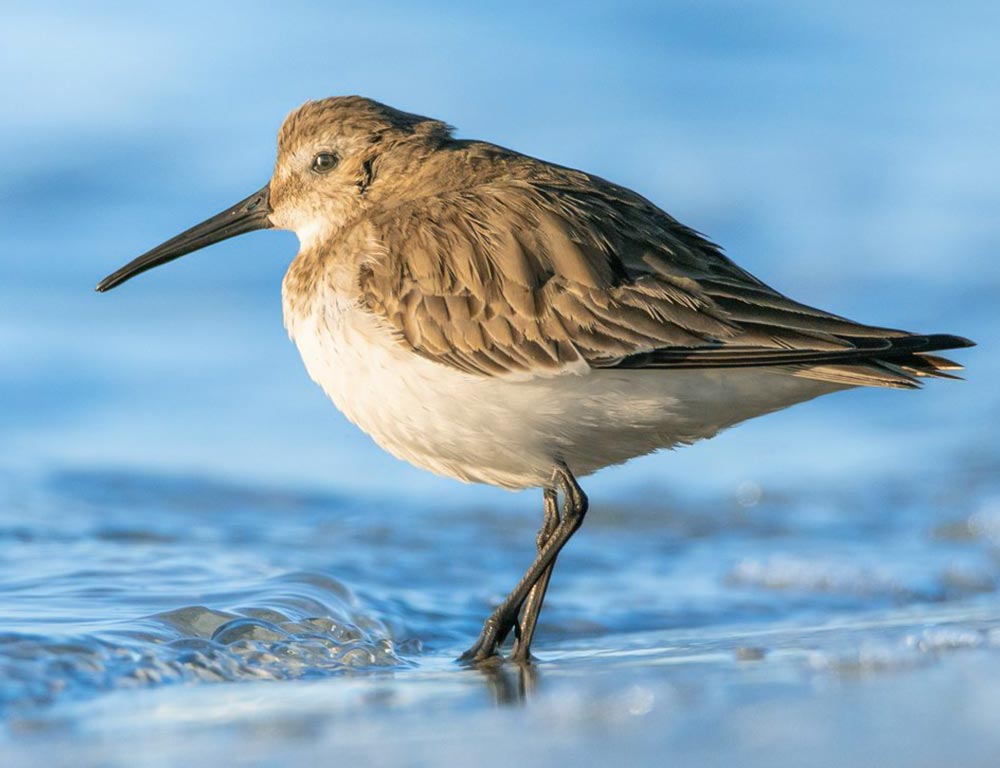
Shorebirds, a diverse group of birds in the Charadriiformes order, are found near water on every continent except Antarctica.
These small to medium-sized birds feed mainly on invertebrates and other small animals but can also be pelagic seabirds or inhabit deserts.
Shorebirds use their long bills to probe mudflats for food like worms and mollusks while some species plunge into the ocean’s depths in search of crustaceans such as crabs and shrimp.
They have strong legs equipped with webbed feet which allow them to move quickly when searching for prey across wetlands, sandbars, beaches, and swamps.
Their feathers make them well adapted to life by land or sea due to their hydrophobic nature which helps reduce drag during swimming or flying through windy conditions making it easier for shorebirds to survive tough environments around the world.
Scientific classification:
| Kingdom | Animalia |
| Phylum | Chordata |
| Class | Aves |
| Infraclass | Neognathae |
| Clade | Neoaves |
| Clade | Gruimorphae |
| Order | Charadriiformes Huxley, 1867 |
Also Featured In: Beautiful Brazilian Birds, Syrian Birds You Need to Know
29. Cuckoos
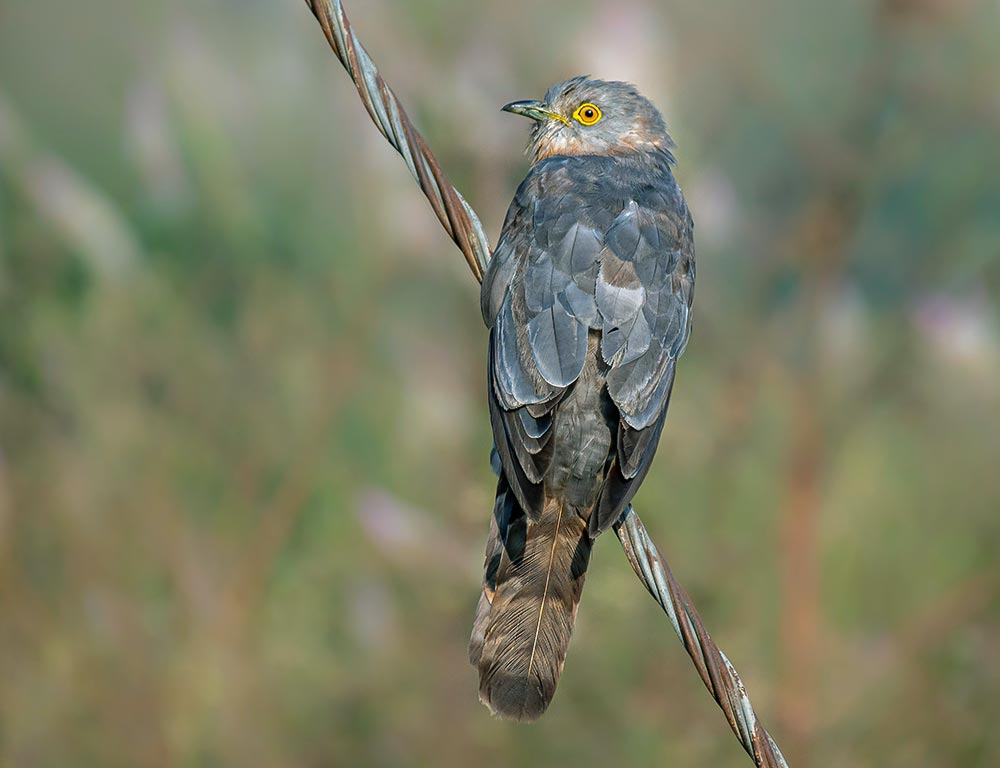
Cuckoos are fascinating birds belonging to the Cuculidae family, which is the only taxon in the order Cuculiformes.
There are many different species within this family such as common or European cuckoo, roadrunners, koels, malkohas, couas, and anis.
Some of these species may even be identified as separate families – Centropodidae and Crotophagidae respectively.
These birds have been known for their unique features such as loud calls heard consistently during certain times of day and night.
They also exhibit behavior like brood parasitism where they lay eggs in other nests so that their chicks can get more food from host parents than their own.
All these traits make them one-of-a-kind creatures worth admiring.
Scientific classification:
| Kingdom | Animalia |
| Phylum | Chordata |
| Class | Aves |
| Clade | Otidimorphae |
| Order | Cuculiformes Wagler, 1830 |
| Family | Cuculidae Leach, 1820 |
Also Featured In: Most Common Types of Bangladeshi Birds, Birds that You’ll Find in Puerto Rico
30. Woodpeckers
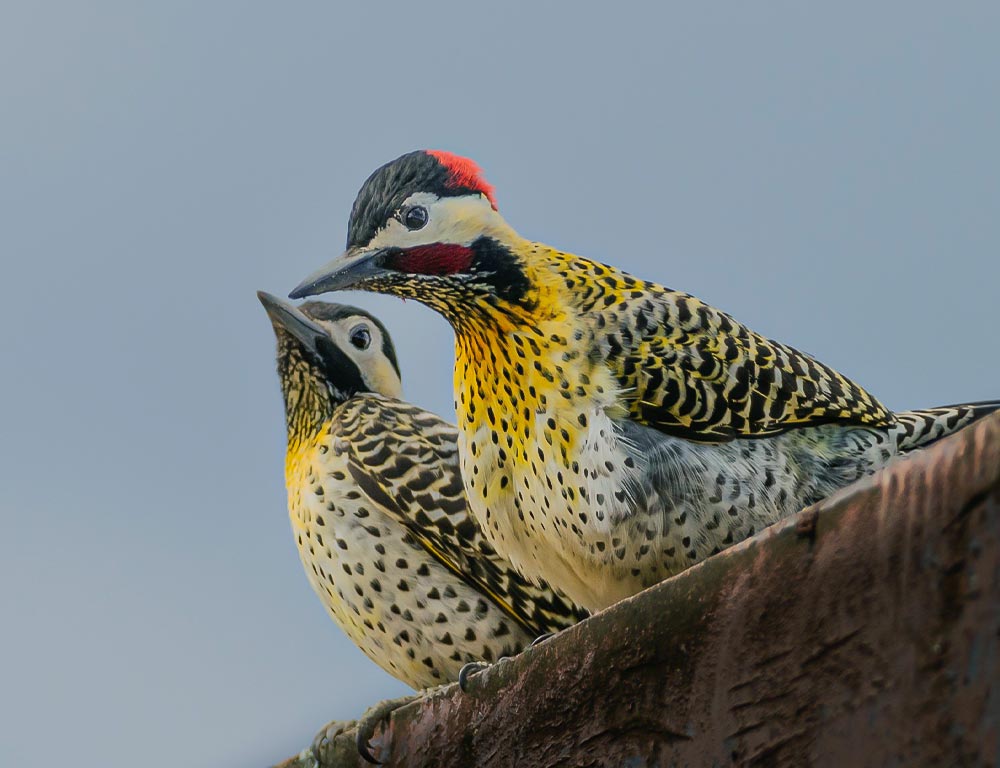
Woodpeckers are an incredibly diverse bird species, found all over the world except for Australia, New Guinea, New Zealand, Madagascar, and the extreme polar regions.
They live in a variety of habitats including forests and woodlands but also rocky hillsides and deserts with no trees.
Their beaks are adapted to pecking at tree bark to find food such as insects or larvae hidden beneath it while they use their long tongues to catch them from deep inside crevices.
Woodpeckers have tough skulls that protect their brains from impact when they bang into things during drumming – a behaviour used by males for territorial signalling and reproduction purposes which is done using strong rapid beats against hollow objects like dead branches or metal poles.
Scientific classification:
| Kingdom | Animalia |
| Phylum | Chordata |
| Class | Aves |
| Order | Piciformes |
| Infraorder | Picides |
| Family | Picidae Leach, 1820 |
Also Featured In: Common Serbian Birds, Birds of Gran Canaria Island
31. Herons
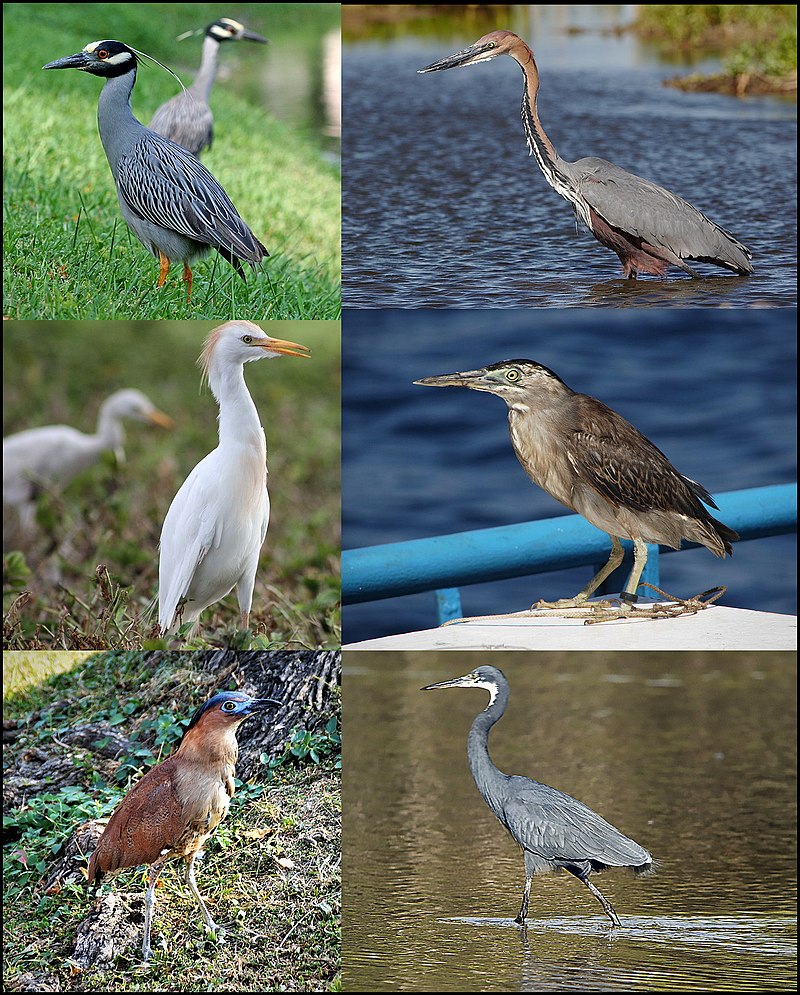
Herons are graceful and elegant birds belonging to the family Ardeidae, with 72 distinct species.
They have long legs and necks that are well-adapted for wading in shallow water like streams or ponds.
Herons can be found near freshwaters as well as along coastal areas worldwide.
Some of these species may also be referred to as egrets, bitterns, or zigzag herons/bitterns because they belong to certain genera such as Botaurus and Ixobrychus respectively.
These birds stand tall when searching for food by standing still in a shallow body of water while waiting patiently until prey appears before quickly capturing it with their sharp bills.
Scientific classification:
| Kingdom | Animalia |
| Phylum | Chordata |
| Class | Aves |
| Order | Pelecaniformes |
| Suborder | Ardei |
| Family | Ardeidae Leach, 1820 |
Also Featured In: Wetlands Birds You Should Know, Birds that Commonly Found in Pond
32. Ducks
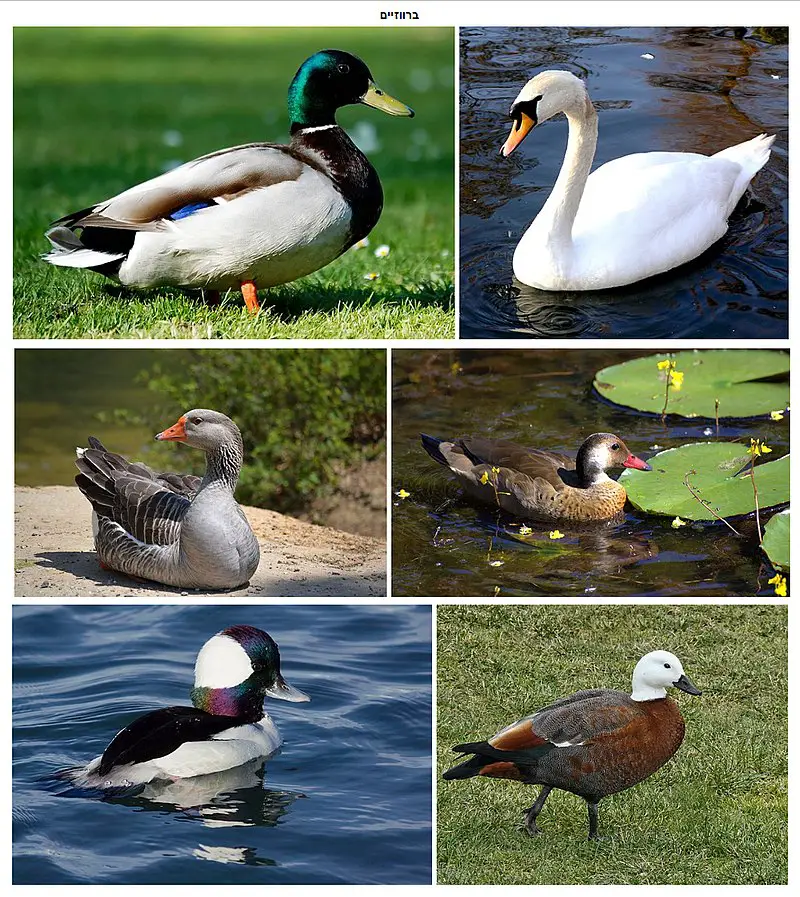
Ducks are water birds belonging to the family of Anatidae. They have a worldwide distribution except for Antarctica and are highly adapted for swimming, floating on water surface,s or in shallow depths.
Ducks come in various sizes ranging from small teals to large swans with around 174 species found across 43 genera.
Their feathers make them waterproof enabling ducks to stay afloat even in stormy waters while their webbed feet allow them to swim gracefully underwater.
Ducks usually feed by filtering food items such as insects, mollusks, and crustaceans through their bills but some also graze on land vegetation like grasses & grains depending upon the availability of resources at different locations they inhabit.
Scientific classification:
| Kingdom | Animalia |
| Phylum | Chordata |
| Class | Aves |
| Order | Anseriformes |
| Suborder | Anseres |
| Superfamily | Anatoidea |
| Family | Anatidae Leach, 1820 |
Also Featured In: Black And White Birds You Don’t Know About, Common Red Ontario Birds
33. Pelecaniformes
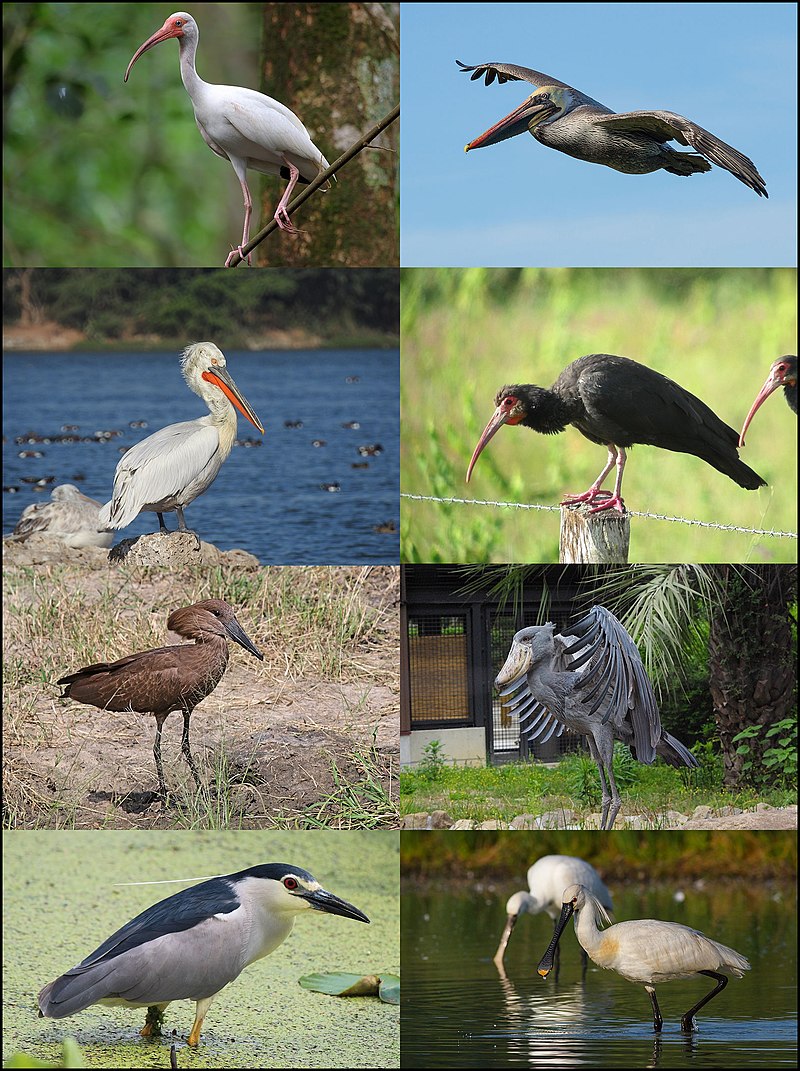
Pelecaniformes are a diverse order of waterbirds found all around the world. They vary in size, but most species are medium to large birds with webbed feet and a bare throat patch (gular patch).
Their nostrils have evolved into non-functional slits. Some examples include pelicans, gannets, cormorants, and frigatebirds which can be found near coasts or on inland waters such as lakes or rivers.
Many Pelecaniforms fish for food by diving underwater from the air – some even swim underwater.
The diet of these birds consists mainly of small fishes although they may also eat mollusks, crustaceans, and other aquatic creatures depending on their location.
All in all, Pelecaniformes make an important contribution to our planet’s biodiversity by keeping populations of fish under control while providing us with great views when we’re out exploring nature.
Scientific classification:
| Kingdom | Animalia |
| Phylum | Chordata |
| Class | Aves |
| Clade | Aequornithes |
| Order | Pelecaniformes Sharpe, 1891 |
Also Featured In: Top Birds Found in Mexico, Birds that Live in Guyana
34. Crow Family
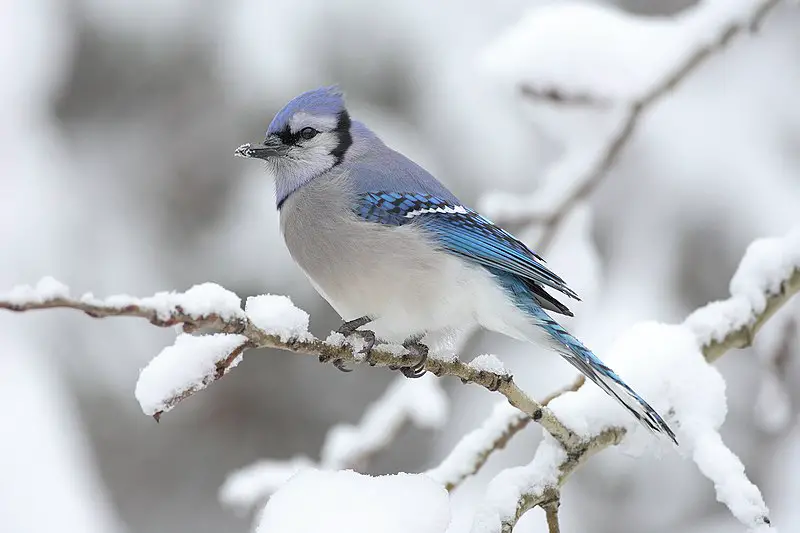
The Crow family is a cosmopolitan group of birds that contains crows, ravens, rooks, jackdaws, jays, magpies, and more.
Altogether there are 133 members in this bird family which all share similar characteristics such as large beaks and feet.
The genus Corvus alone makes up over a third of the entire crow family population with species like the common crow or blackbird being some of its most recognizable members.
All these birds have strong social bonds so they often travel in groups to find food sources or build nests together for protection against predators.
With their intelligence and adaptation skills, they can survive almost anywhere on Earth from mountains to cities making them one of the world’s most successful families of avian creatures.
Scientific classification:
| Kingdom | Animalia |
| Phylum | Chordata |
| Class | Aves |
| Order | Passeriformes |
| Superfamily | Corvoidea |
| Family | Corvidae Leach, 1820 |
Also Featured In: Common Birds in Japan, Italian Birds You Should Know
35. Passerine
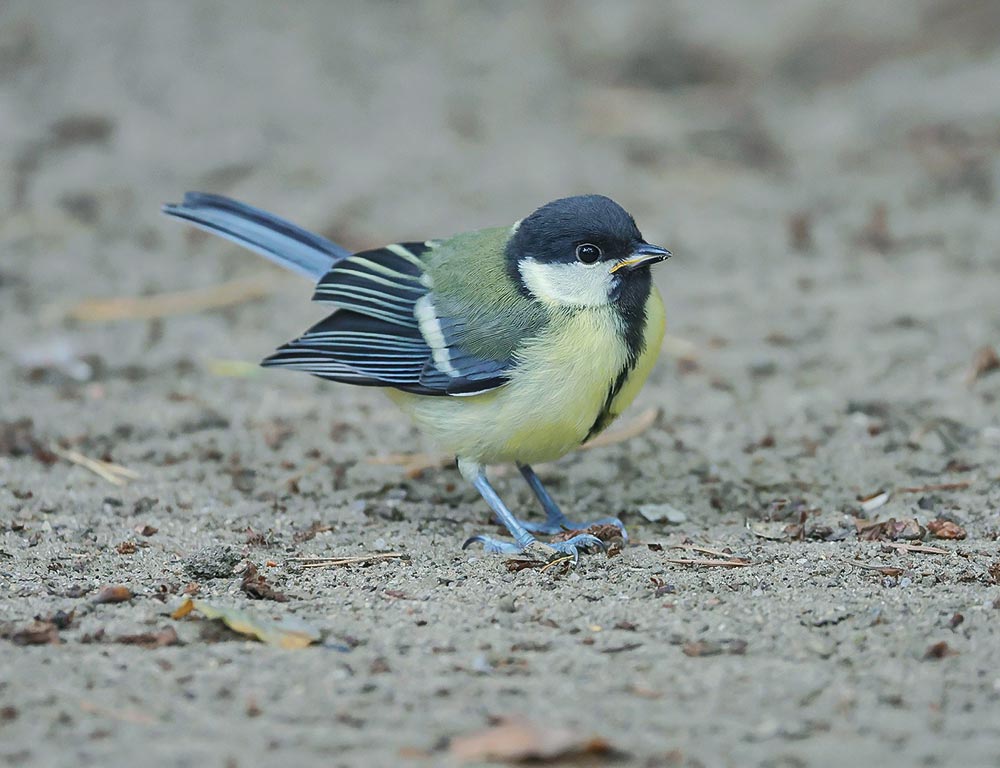
Passerines are a vast order of birds, comprising more than half the species in existence. Many familiar garden and woodland species fall into this category such as sparrows, blackbirds, finches, and warblers.
They can be recognized by their arrangement of toes; three pointing forward with one back which helps them perch on branches or wires.
Passerines range from tiny wrens to large crows and have adapted to inhabit many environments around the world including forests, mountainsides, and deserts.
They feed mainly on insects but some also consume fruit and seeds depending on their diet preferences.
Their diversity is truly remarkable from vibrant colored tropical parrots to drab winter thrushes – making passerine birds an integral part of our natural heritage.
Scientific classification:
| Kingdom | Animalia |
| Phylum | Chordata |
| Class | Aves |
| Clade | Psittacopasserae |
| Order | Passeriformes Linnaeus, 1758 |
Also Featured In: Egyptian Birds, African Birds
36. Barn Owl
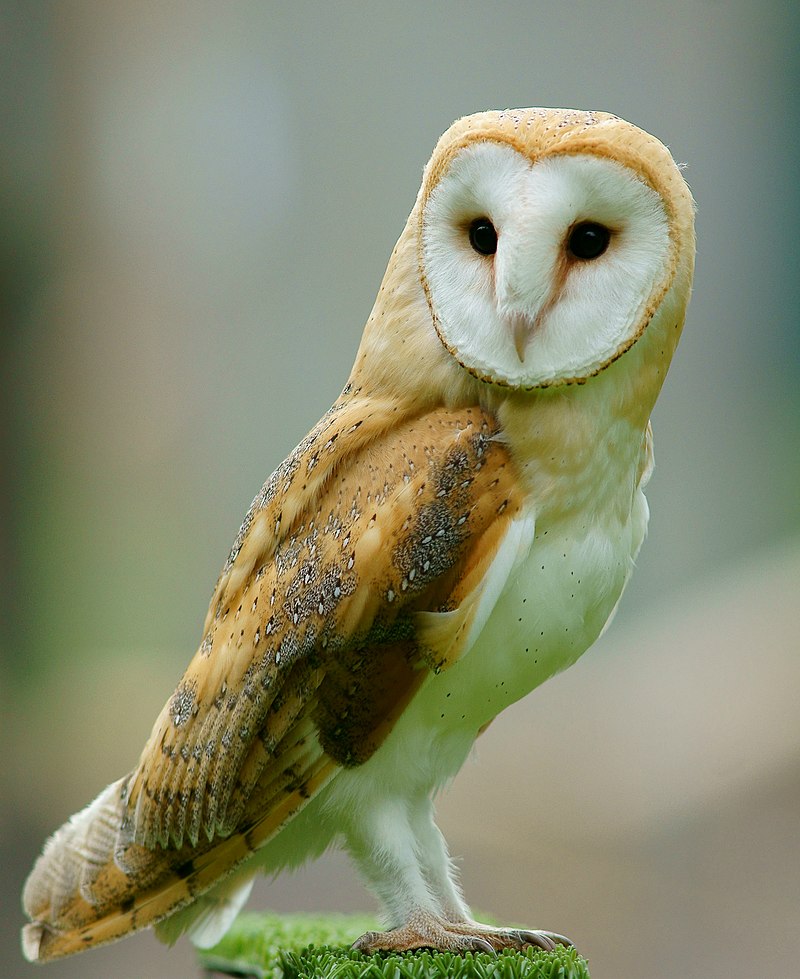
Barn owls are a beautiful and fascinating species of birds found around the world, except in polar and desert regions, most of Indonesia, and some Pacific Islands.
They have large eyes, thin legs, and long wings that help them to hunt silently in low-light conditions.
Their white coloring helps them blend into their surroundings making it easier for them to catch prey.
Barn owls are nocturnal hunters who use their impressive hearing capabilities to locate rodents moving within vegetation or tunnels beneath the ground.
They also feed on insects such as beetles, moths, etc, which they can detect from high up in flight using their excellent vision even at night time.
The barn owl plays an important role in balancing ecosystems by controlling rodent populations which is why they should be protected wherever possible so that this vital service continues uninterruptedly.
Scientific classification:
| Kingdom | Animalia |
| Phylum | Chordata |
| Class | Aves |
| Order | Strigiformes |
| Family | Tytonidae |
| Genus | Tyto |
| Species | T. alba |
Also Featured In: Native Birds Of Germany, Belarus Birds You Should Know
37. Starling
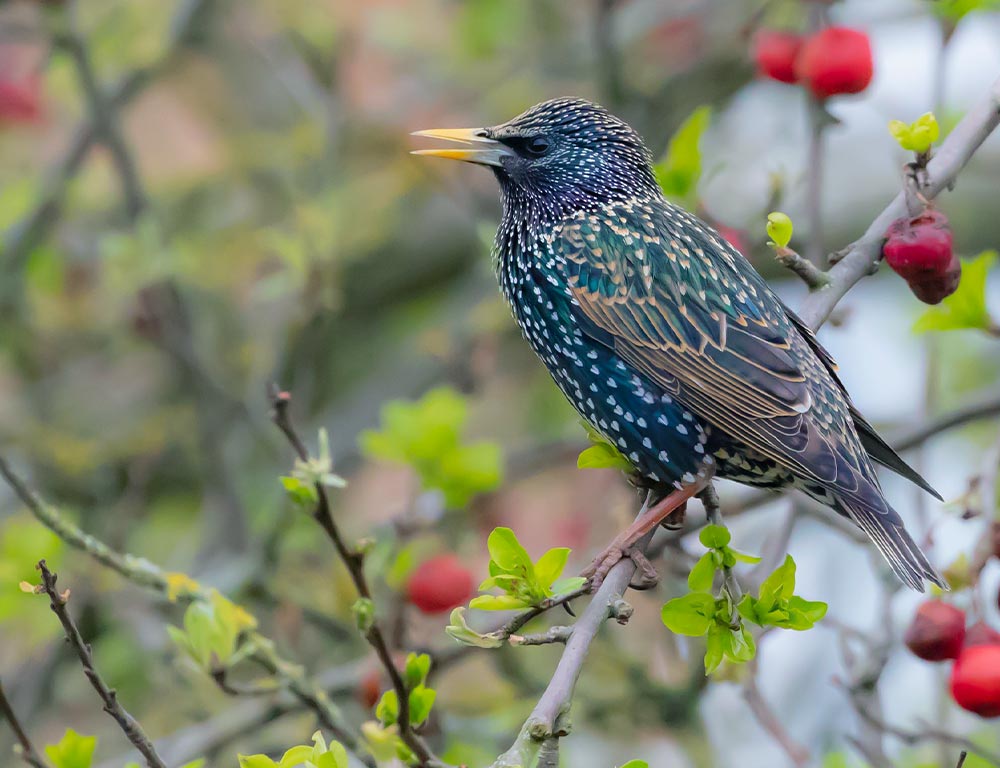
Starlings are small to medium-sized birds belonging to the Sturnidae family. They have a unique iridescent plumage, making them popularly known as glossy starlings in Africa and mynas in Asia.
Starlings inhabit Europe, Asia, and Africa; some species even migrate between continents for food or better climates.
These birds form large flocks of up to thousands at a time during their migration periods, creating spectacular visual displays while they soar through the sky.
Besides being beautiful creatures, starlings can also imitate sounds such as human speech – an impressive feat that has been documented by many ornithologists over the years.
Scientific classification:
| Kingdom | Animalia |
| Phylum | Chordata |
| Class | Aves |
| Order | Passeriformes |
| Suborder | Passeri |
| Family | Sturnidae Rafinesque, 1815 |
Also Featured In: Birds of United Kingdom, Hong Kong Birds You Need to See
38. Swallows
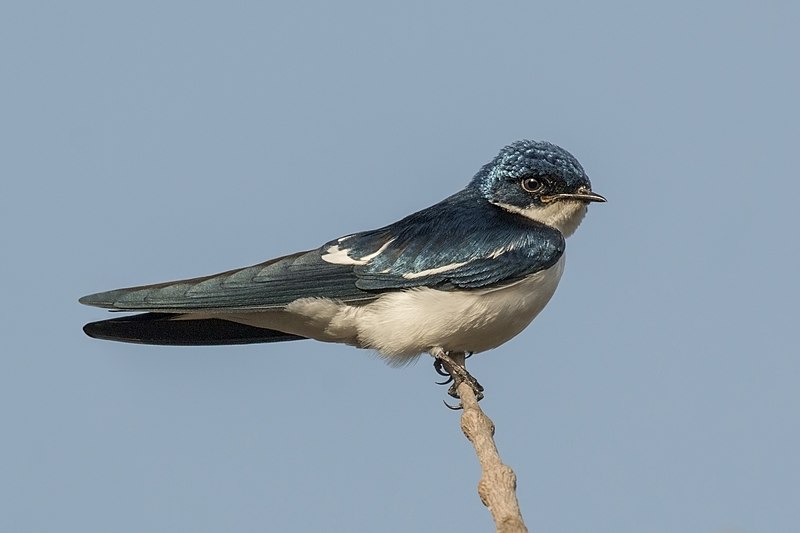
Swallows are small songbirds found around the world on all continents, even Antarctica. They have a distinctive appearance and are highly adapted to aerial feeding with their long wings and forked tails.
There are an estimated 90 species of swallows in 19 different genera, making them one of the most widespread bird families on earth.
The barn swallow is perhaps the most well-known species among these birds due to its presence near human settlements across Europe; they’re so ubiquitous that “swallow” has become synonymous with this particular type of bird there.
Swallows also play important roles in ecology as insectivores; some species migrating vast distances every year between summer breeding grounds and wintering locations.
Scientific classification:
| Kingdom | Animalia |
| Phylum | Chordata |
| Class | Aves |
| Order | Passeriformes |
| Suborder | Passeri |
| Family | Hirundinidae Rafinesque, 1815 |
Also Featured In: Birds that are Used in Feng Shui, Spring Birds that Live around Us
39. Tit
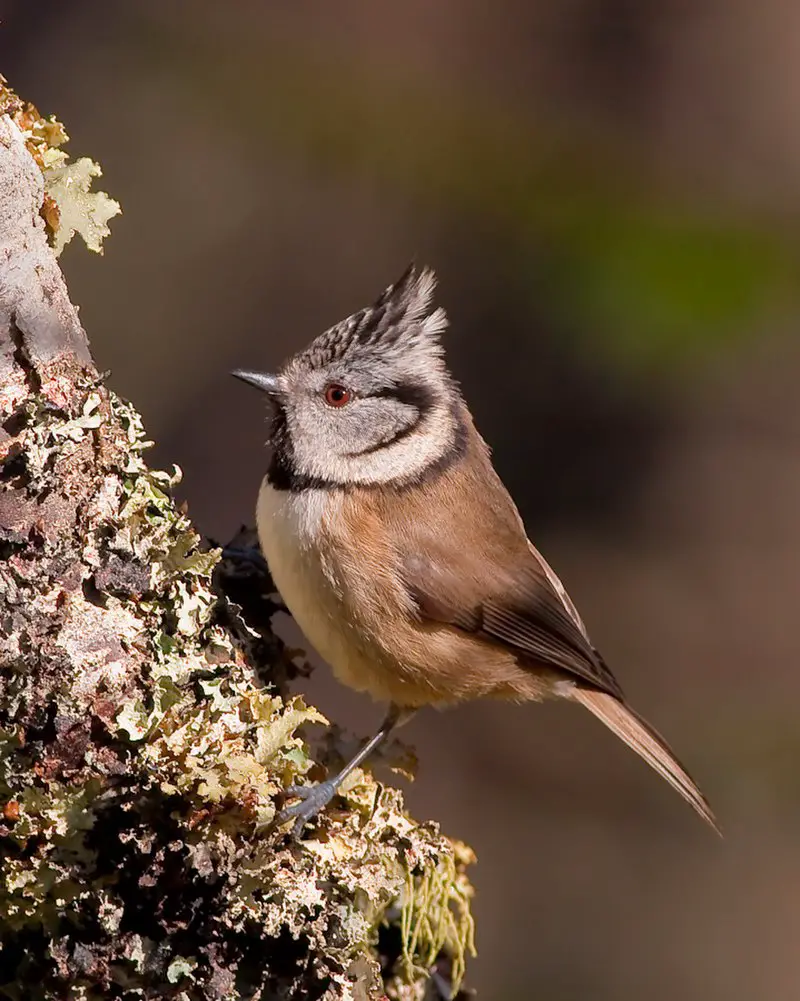
Tit birds are small passerine birds belonging to the family Paridae, found mainly in Northern Hemisphere and Africa.
These active little birds can be seen singing sweet songs throughout the day or scavenging for food at feeders.
They have short, stout bills which they use to crack open seeds and nuts with ease. Tit species range from chickadees to titmice; all of them sport a distinctive black head cap that stands out against their pale grey bodies.
Their bright eyes allow them excellent vision while searching for food – even on gloomy days when other predators may not see as well.
Tits are an important part of any healthy ecosystem and provide many ecological services such as insect control and seed dispersal.
Scientific classification:
| Kingdom | Animalia |
| Phylum | Chordata |
| Class | Aves |
| Order | Passeriformes |
| Infraorder | Passerida |
| Family | Paridae Vigors, 1825 |
Also Featured In: Willows Birds Around You, Most Common Spain Birds
40. Rail
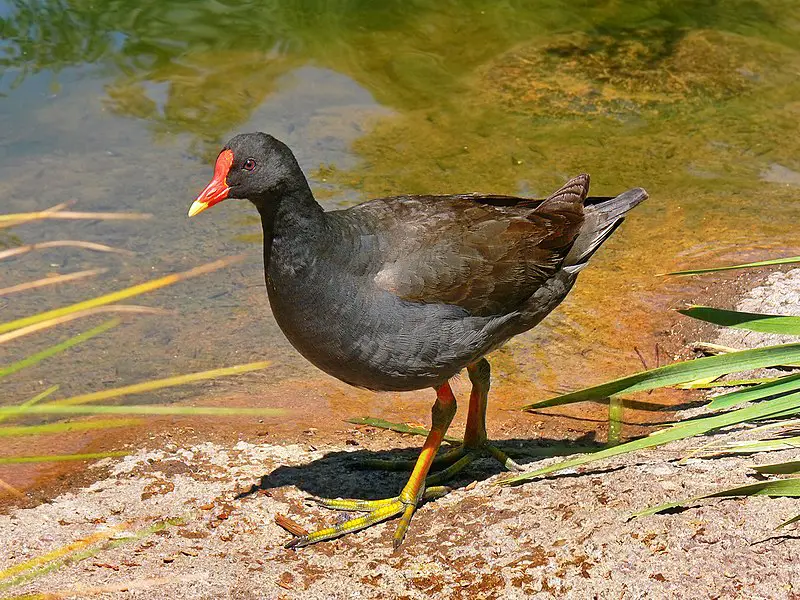
Rails are a diverse family of birds, ranging from small to medium size and living in habitats across the world.
They can be found around wetlands, as well as any other land-based environment except for deserts, polar regions, or areas with persistent snow cover.
These ground-dwellers have short legs and long toes that help them maneuver through wetland vegetation easily.
They typically feed on insects and aquatic invertebrates but will also eat seeds and berries when available.
Species such as coots, crakes, and gallinules have evolved different bill shapes to allow them to navigate their environments more efficiently while searching for food.
Rails live both alone or in pairs depending on the species; some migrate seasonally while others remain at one location year-round.
Scientific classification:
| Kingdom | Animalia |
| Phylum | Chordata |
| Class | Aves |
| Order | Gruiformes |
| Family | Rallidae Rafinesque, 1815 |
Also Featured In: Most common Birds in France, Swamps Birds You Should Know
41. Tyrant Flycatchers
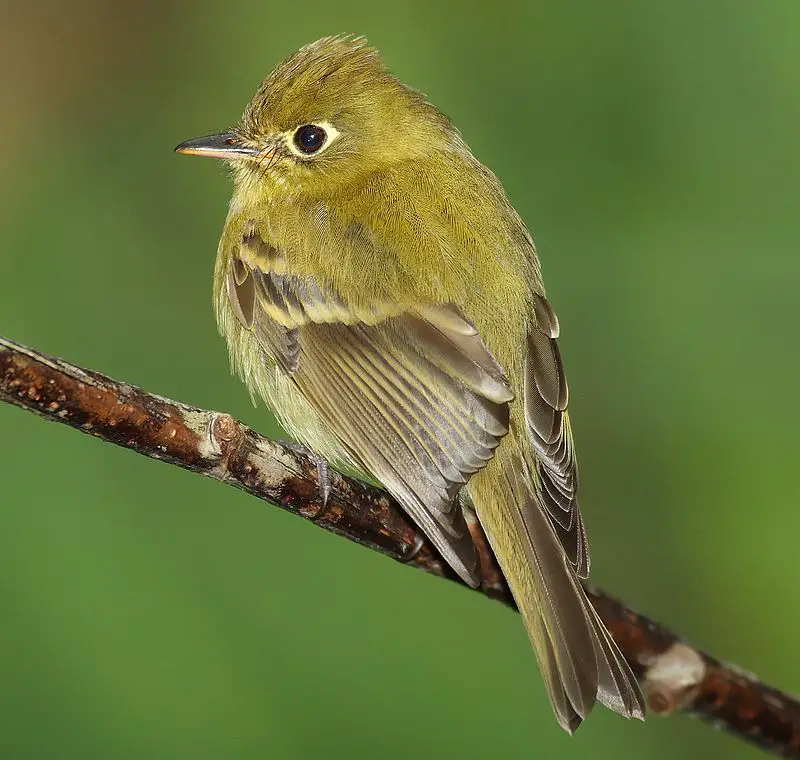
Tyrant flycatchers are a family of birds found in North and South America, containing over 400 species. These birds come in an array of shapes and sizes, with vibrant plumage to match.
They are the most diverse avian family across all countries they inhabit except for the United States and Canada.
Their diet consists mainly of insects but also includes small reptiles or amphibians where available.
The behavior varies between each bird; some prefer open areas while others like dense forests as their habitat many even migrate regularly.
Tyrant Flycatchers have adapted well to human presence thanks to the abundance of food sources that often accompany them such as backyards, parks, etc.
All things considered, these incredible creatures are truly amazing.
Scientific classification:
| Kingdom | Animalia |
| Phylum | Chordata |
| Class | Aves |
| Order | Passeriformes |
| Parvorder | Tyrannida |
| Family | Tyrannidae Vigors, 1825 |
Also Featured In: Birds of Argentina, Most Common Birds in South America Birds
42. Parrots
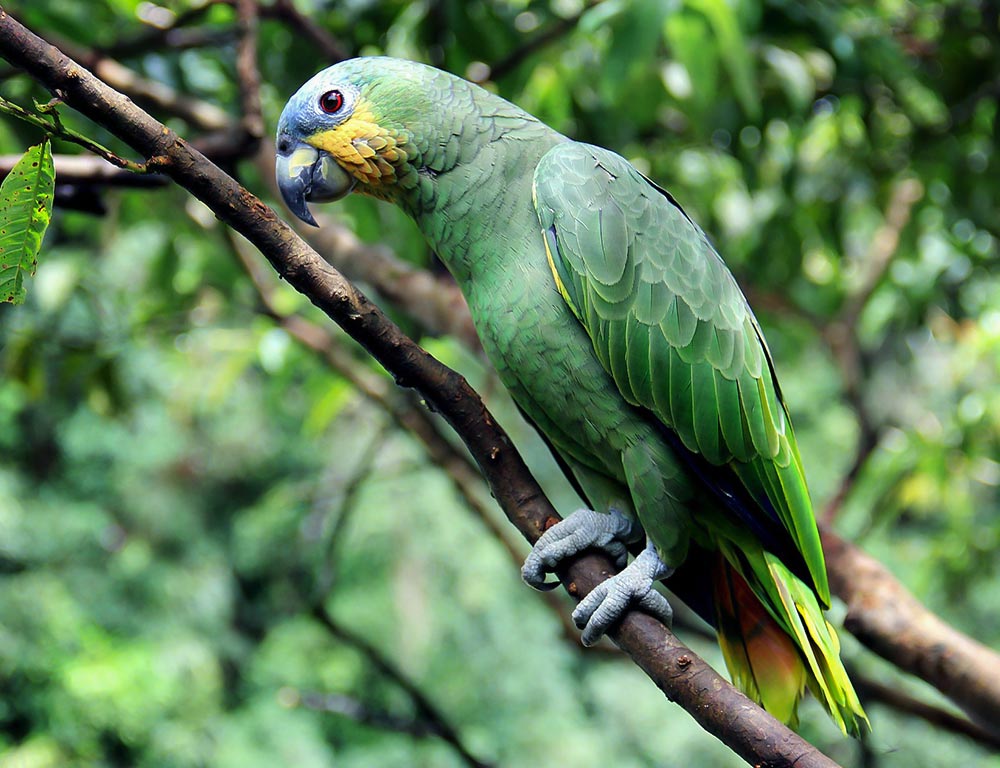
Parrots are a diverse group of birds, found in tropical and subtropical regions. They make up the order Psittaciformes, which is divided into three superfamilies: “true” parrots (Psittacoidea), cockatoos (Cacatuoidea) and New Zealand Parrots (Strigopoidea).
Many species have brightly colored feathers that can be red, yellow, or blue. Their strong curved bills allow them to feed on fruits, nuts, and seeds.
Parrot behavior ranges from playful to aggressive depending on their environment and socialization with humans.
Some even learn human words. As beloved pets, they bring joy to many households around the world though it’s important for owners to understand how best to care for these intelligent creatures so as not to cause distress or harm.
Scientific classification:
| Kingdom | Animalia |
| Phylum | Chordata |
| Class | Aves |
| Clade | Psittacopasserae |
| Order | Psittaciformes Wagler, 1830 |
Also Featured In: Most common birds in Australia, Birds That Live in the Jungle
43. Sandhill Crane
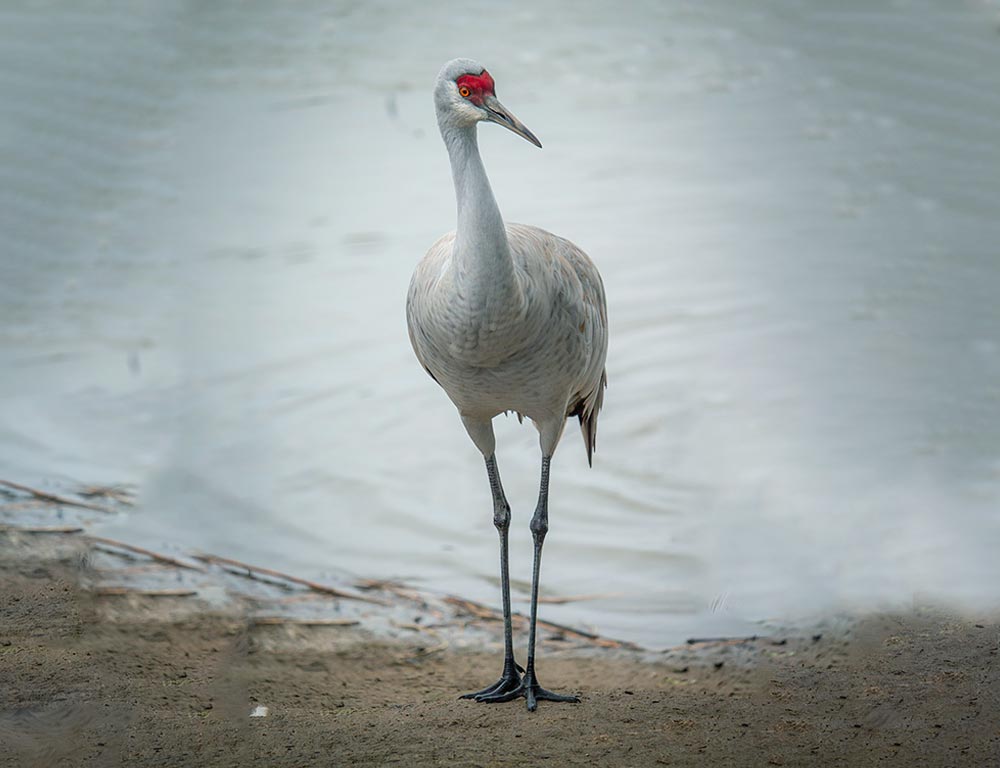
Sandhill Cranes are a large species of crane native to North America and northeastern Siberia. They are known for their distinctive calls, long legs, and long necks.
These birds typically inhabit wetland areas like the Platte River in Nebraska’s Sandhills on the Great Plains.
In Central Florida, they often gather at the edges of bodies of water such as lakes or rivers.
During the breeding season, sandhill cranes can be seen performing elaborate courtship dances that involve bowing and jumping in unison with their partner.
Their diet consists mainly of plant material including grains, roots, tubers, and aquatic plants which they obtain by pecking or digging into mudflats using their bill or feet respectively.
With an average lifespan between 10-20 years, these majestic creatures make great additions to any wetland habitat.
Scientific classification:
| Kingdom | Animalia |
| Phylum | Chordata |
| Class | Aves |
| Order | Gruiformes |
| Family | Gruidae |
| Genus | Antigone |
| Species | A. canadensis |
Also Featured In: Most Common Types of Birds Found in Cuba, Birds that Found in the Yellowstone
44. Nightjars
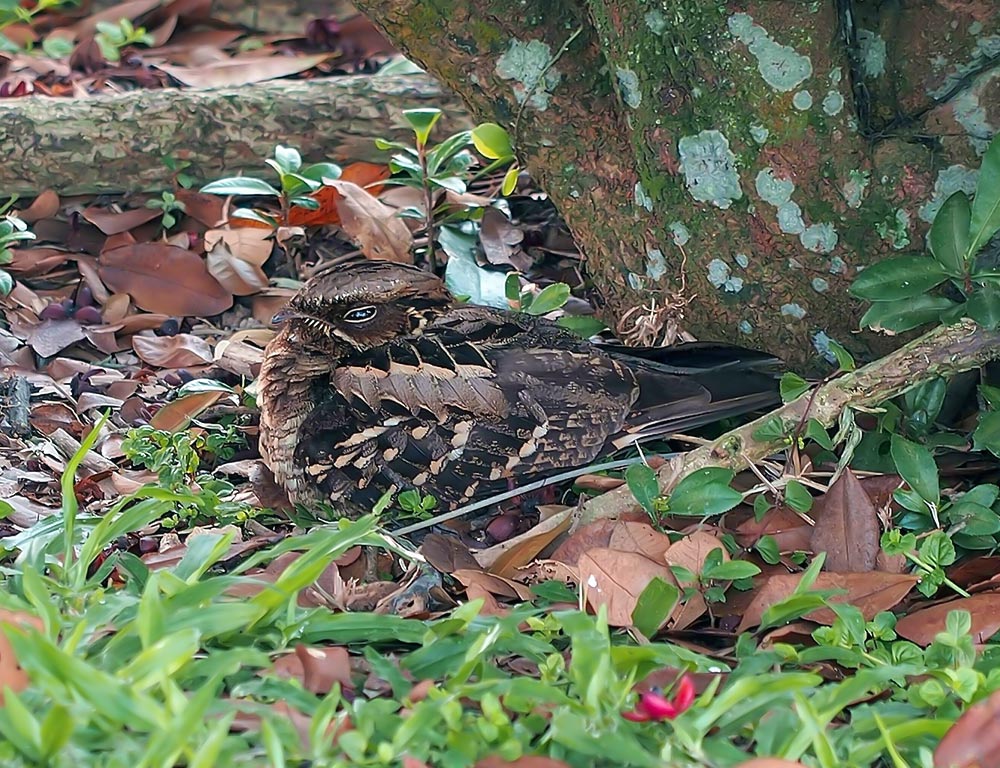
Nightjars are fascinating nocturnal or crepuscular birds belonging to the Caprimulgidae family. These medium-sized birds have long wings, short legs, and very small bills.
They can be found across many parts of the world in forests, grasslands, and scrubland habitats.
Nightjars feed on insects such as moths, beetles, crickets, and cicadas which they catch with their sharp eyesight during nighttime flights over open fields when hunting for food.
Their scientific name ‘Caprimulgidae’ is derived from an old folktale that claims these birds suck milk from goats.
In reality, though, they are harmless creatures who pose no threat to livestock whatsoever.
Nightjars make a variety of different calls ranging from whistles to chirps throughout the night – adding further mystery to this amazing species.
Scientific classification:
| Kingdom | Animalia |
| Phylum | Chordata |
| Class | Aves |
| Clade | Strisores |
| Order | Caprimulgiformes Ridgway, 1881 |
| Family | Caprimulgidae Vigors, 1825 |
Also Featured In: Birds of Israel, Lebanon Birds Live in Semi-Desert Areas
45. Falconiformes
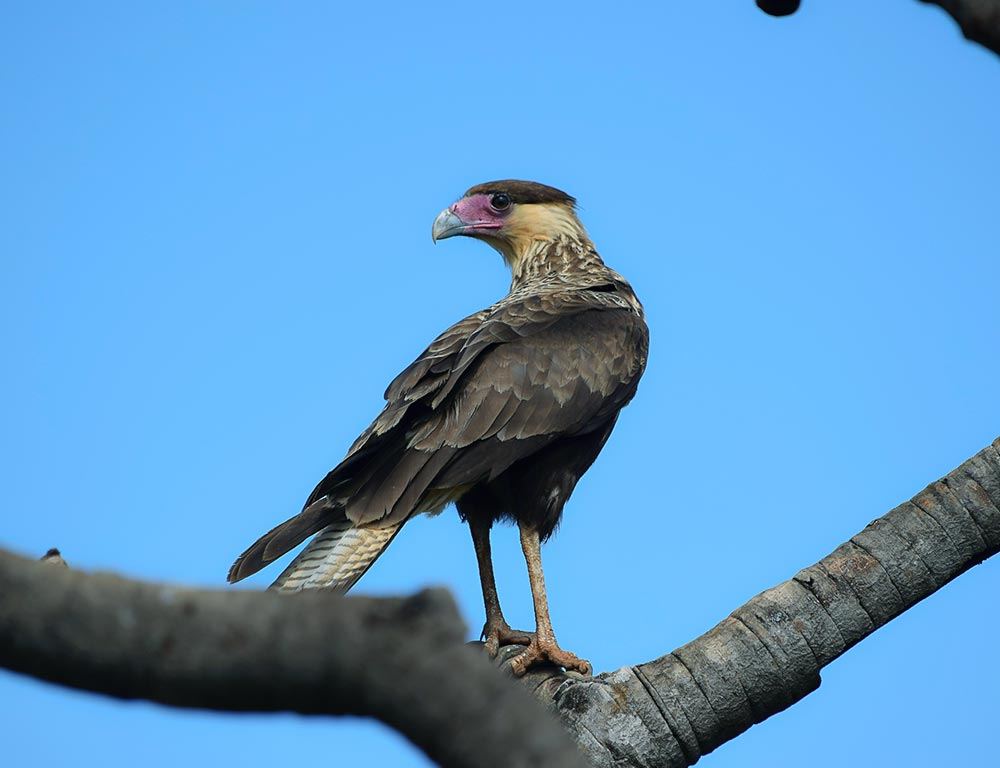
Falconiformes is an order of birds that includes the family Falconidae, which consists of falcons and caracaras. Additionally, there are handfuls of mysterious species from the Paleogene era.
Traditionally, other bird-of-prey families like Cathartidae (New World vultures and condors), Sagittariidae (secretarybird), Pandionidea (ospreys) and Accipitridae (hawks) were also classified as members in this group.
Advances in comparative genomics have allowed for a more thorough understanding not just of these unique species but their relationships with one another too.
Scientific classification:
| Kingdom | Animalia |
| Phylum | Chordata |
| Class | Aves |
| Clade | Eufalconimorphae |
| Order | Falconiformes Sharpe, 1874 |
Also Featured In: Most Common Birds In Paraguay,
46. Albatrosses
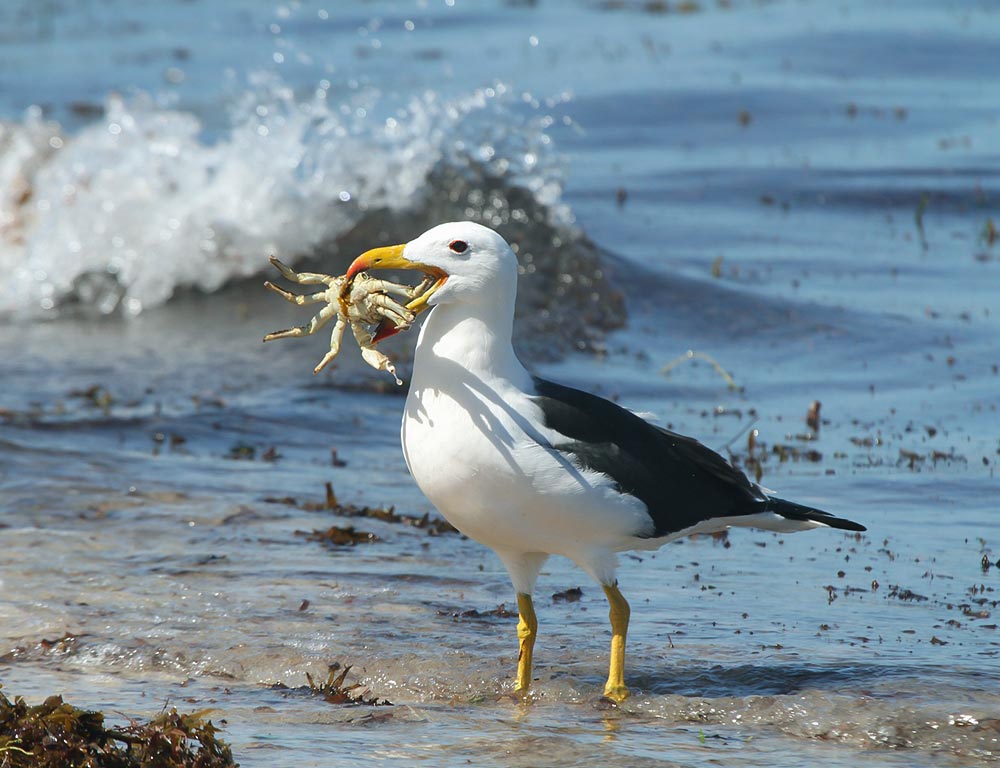
Albatrosses are majestic, large seabirds belonging to the Diomedeidae family in the Procellariiformes order.
These birds have impressive wingspan and can fly great distances over oceans with minimal effort.
They inhabit all of the world’s southern oceans, ranging from Antarctica up through New Zealand and Australia as well as parts of the northern Pacific Ocean region.
Albatross populations were once abundant throughout much of their range but they now face threats such as longline fishing gear entanglement which has caused a significant decline in numbers in some areas.
Furthermore, occasional vagrants have been found outside their native ranges including fossil remains suggesting that albatrosses previously existed in other regions too.
Scientific classification:
| Kingdom | Animalia |
| Phylum | Chordata |
| Class | Aves |
| Order | Procellariiformes |
| Family | Diomedeidae G.R. Gray 1840[1] |
Also Featured In: New Zealand Birds, Birds that Live in the Ocean
47. Rufous Hummingbird
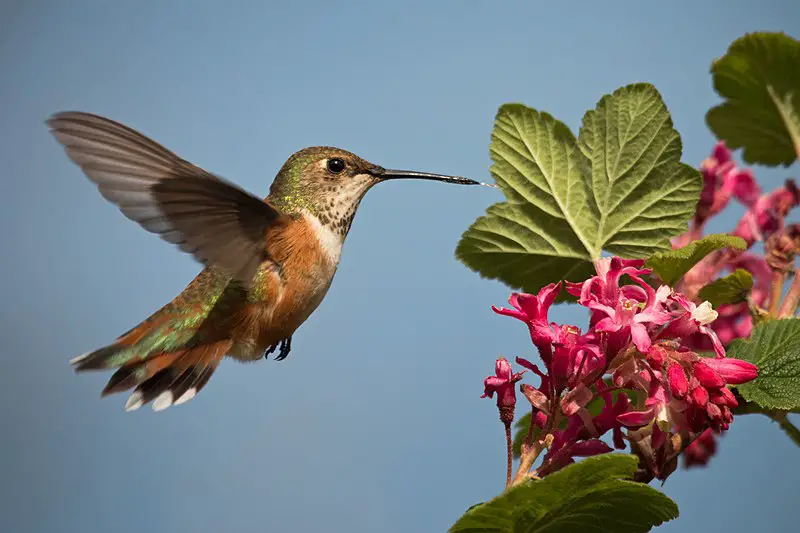
The beautiful Rufous Hummingbird is a small bird of 8 cm in length, with a long slender beak. It stands out due to its extraordinary flight skills and incredible migratory transits- it can fly up to 2,000 miles.
This species was formally described by German naturalist Johann Friedric in 1788 and belongs to the genus Selasphorus.
These birds are found all over North America and parts of Mexico during summertime; while wintering in Central America or northern South America.
They feed on nectar from flowers as well as insects for protein intake. With their vibrant feathers, agile flying abilities, and fascinating life cycle they make an interesting addition to any backyard wildlife habitat.
Scientific classification:
| Kingdom | Animalia |
| Phylum | Chordata |
| Class | Aves |
| Order | Apodiformes |
| Family | Trochilidae |
| Genus | Selasphorus |
| Species | S. rufus |
Also Featured In: Hummingbirds Species, Birds That Live in Colorado
48. Old World Sparrows
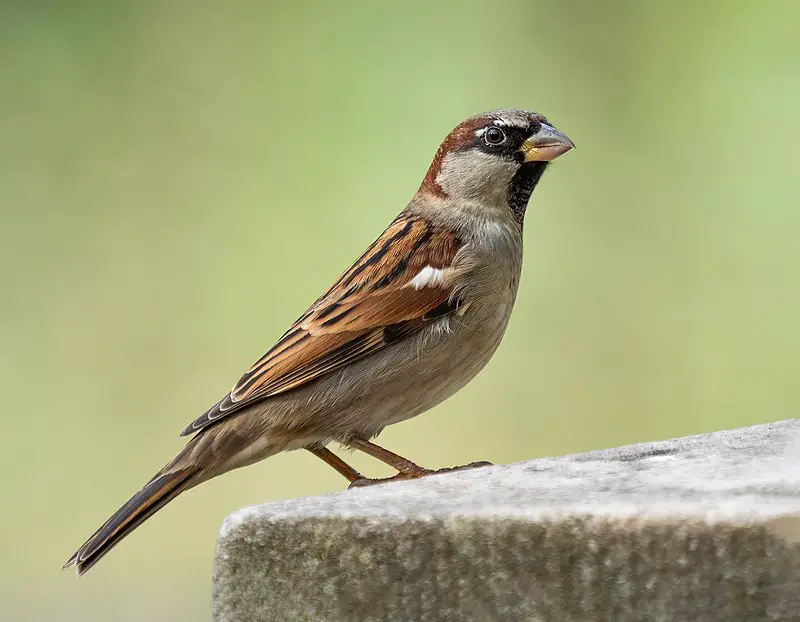
Old World sparrows are small passerine birds belonging to the family Passeridae. They are characteristically much smaller than their New World counterparts, ranging in size from 6 centimeters up to 20 centimeters depending on species.
The most common characteristics of these birds include a black or grey head and upper body with white underparts and white stripes above their eyes.
Notable features such as barring and streaking can be found across different species within this group.
Old-world sparrows typically inhabit open grassland areas but have been known to nest around human dwellings near urban settings as well, making them easily recognizable by many people all over the globe.
Scientific classification:
| Kingdom | Animalia |
| Phylum | Chordata |
| Class | Aves |
| Order | Passeriformes |
| Suborder | Passeri |
| Infraorder | Passerida |
| Superfamily | Passeroidea |
| Family | Passeridae Rafinesque, 1815 |
Also Featured In: Alaska Birds, Most Common Winter Birds
49. Columbidae
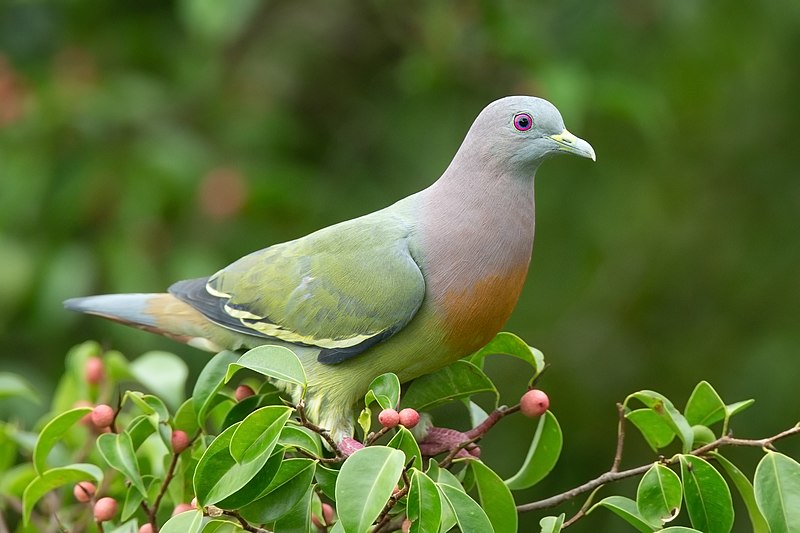
Columbidae is a bird family that includes both doves and pigeons. These birds are characterized by their stout bodies, short necks, and small slender bills with fleshy ceres in some species.
They feed mainly on seeds, fruits, and plants found all around the world but have the greatest variety in Indomalayan and Australasian regions.
Columbidae have an unmistakable soft cooing sound which makes them one of the most beloved avian families worldwide – especially among city dwellers.
Whether it be feeding time or just hearing their soothing call throughout nature walks; these birds will remain a favorite for many more years to come.
Scientific classification:
| Kingdom | Animalia |
| Phylum | Chordata |
| Class | Aves |
| Clade | Columbimorphae |
| Order | Columbiformes Latham, 1790 |
| Family | Columbidae Leach, 1820 |
Also Featured In: birds of white, Birds for Your Home Garden
50. Sandpiper
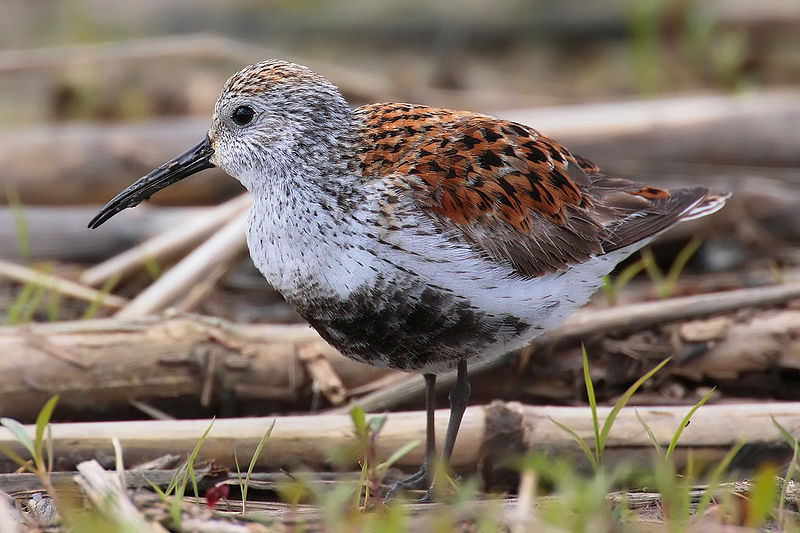
Sandpiper is a type of wading bird that belongs to the family Scolopacidae. It is a diverse family that includes various species such as curlew and snipe.
Sandpipers have different bill lengths that allow them to feed on small invertebrates and creatures found in mud or soil.
Due to this diversity, different species can coexist in the same habitat without competing for food.
Sandpipers are commonly found near the coast but are also found in other wetland environments.
They are known for their slender legs, long beak, and streamlined body that enables them to move easily in and out of water.
Sandpipers are a unique and fascinating bird species that are interesting to observe in their natural habitat.
Scientific classification:
| Kingdom | Animalia |
| Phylum | Chordata |
| Class | Aves |
| Order | Charadriiformes |
| Suborder | Scolopaci |
| Family | Scolopacidae Rafinesque, 1815 |
Also Featured In: Birds You’ll Find in the Sea, Turkey Birds You Should Know
51. Owls
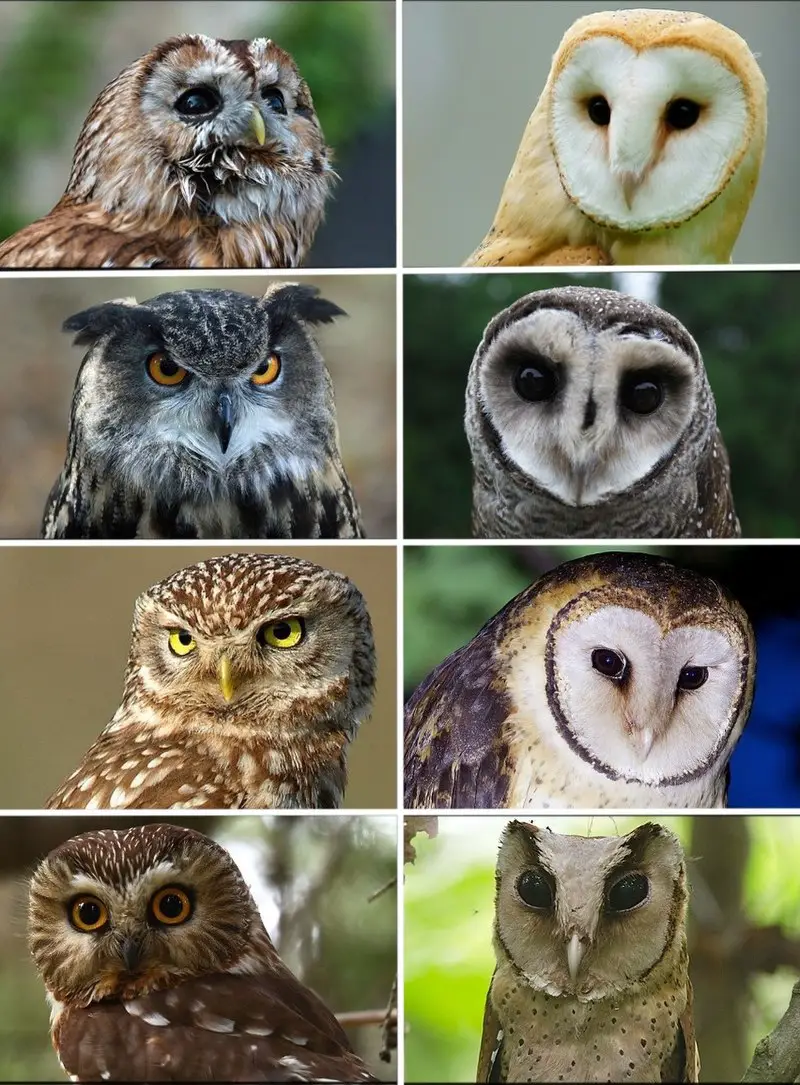
Owls are remarkable birds of prey that belong to the order Strigiformes. Known for their solitary and nocturnal behavior, these birds are commonly associated with an upright stance, broad head, binocular vision, binaural hearing, sharp talons, and specially adapted feathers for silent flight.
With over 200 species, owls are mostly carnivorous and hunt small mammals, making them excellent at controlling rodent populations.
Although most owls are solitary animals, some species, such as the gregarious burrowing owl, are social and interact regularly with their kind.
Despite their nocturnal habits, some owls, like the northern hawk owl, are diurnal and hunt during daylight hours.
All in all, owls are fascinating creatures that have intrigued bird watchers and scientists alike for many years.
Scientific classification:
| Kingdom | Animalia |
| Phylum | Chordata |
| Class | Aves |
| Clade | Telluraves |
| Order | Strigiformes Wagler, 1830 |
Also Featured In: Famous Paintings Birds, Flight Birds You Should Know
Conclusion
This comprehensive guide to 51 common species of birds has provided valuable insights into the fascinating world of avian life. We have explored their diverse appearances, unique behaviors, and the various habitats they call home.
Additionally, we have touched upon the critical aspect of conservation status, highlighting the importance of protecting these magnificent creatures and their ecosystems.
As stewards of our environment, it is our responsibility to ensure the well-being of these birds for future generations to enjoy.
By appreciating and understanding these birds, we can contribute to their conservation efforts and maintain the rich biodiversity of our planet.